Hisense U6NQ is really an interesting model from the Chinese manufacturer. It is the first MiniLED from the series for 2024 and the only one with a refresh rate of 60 Hz. Starting with the picture quality, the MiniLED backlighting combined with the VA panel does its job – the contrast is good, and watching films in the evening is a pleasure. A stable HDR effect, support for Dolby Vision and HDR10+, as well as solid colours mean that the television handles most everyday tasks well. The Vidaa system works smoothly – it is fast and intuitive, without any annoying stutters. A few popular applications, such as Spotify or Tidal, are missing, but most users will find what they need here, including the option to record programmes to a USB stick or external drive. What about motion fluidity? It's quite decent. The ability to choose between 4K at 60 Hz and Full HD at 120 Hz is a nice addition, especially if we are gaming on consoles that often do not offer perfect 4K at 120 frames. Features like VRR and ALLM further enhance the comfort of occasional gaming. However, there are some drawbacks. Issues with motion blur are noticeable in dynamic scenes, and the lack of any feature reducing this effect does not help. In terms of picture quality, this television strongly prioritises brightness, which sometimes leads to situations where black gains a slightly bluish tint in difficult conditions. In short: Hisense U6NQ is a decent choice for those looking for a television offering good picture quality and a convenient operating system. It is not equipment without compromises, but it performs really solidly for its price.
- Matching (Score)
- Our verdict
- TV appearance
- Where to buy
- Contrast and black detail
- HDR effect quality
- Factory color reproduction
- Color reproduction after calibration
- Smoothness of tonal transitions
- Image scaling and smoothness of tonal transitions
- Blur and motion smoothness
- Console compatibility and gaming features
- Input lag
- Compatibility with PC
- Viewing angles
- TV efficiency during daytime
- Details about the matrix
- TV features
- Apps
- Playing files from USB
- Sound
Hisense U6NQ vs Philips PUS8500
Direct compare
PUS8500 / PUS8560 / PUS8510 / PUS8600

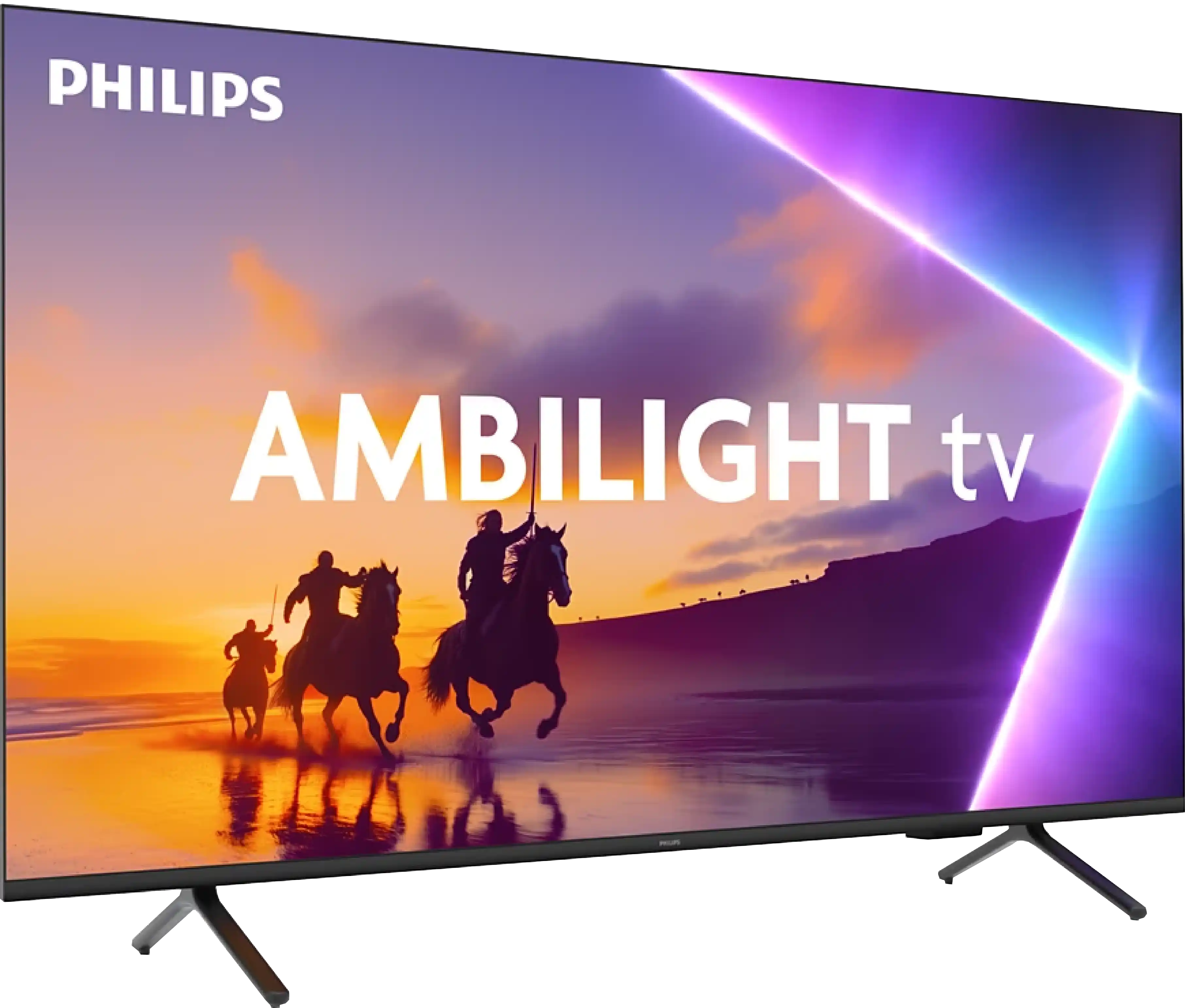
Panel type: LCD VA
Resolution: 3840x2160
System: VIDAA
Model year: 2024
Complete the survey to find out the result

Panel type: LCD VA
Resolution: 3840x2160
System: Titan OS
Model year: 2025
Complete the survey to find out the result

Overall rating
6.5
5.6
Movies and series in UHD quality
6.7
5.4
Classic TV, YouTube
6.5
6.1
Sports broadcasts (TV and apps)
5.0
5.2
Gaming on console
7.1
6.7
TV as a computer monitor
6.0
5.6
Watching in bright light
6.1
4.9
Utility functions
8.9
4.9
Apps
7.7
4.6
Sound quality
6.3
6.2
Complete the survey to find out what fits your preferences
Advantages
Good contrast and black levels for its price class
Support for multiple HDR formats - Dolby Vision, HDR 10+
Accurate colour reproduction out of the box
Flexible refresh rate - 4K@60Hz or FullHD@120Hz
Decent for occasional gaming - low input lag, ALLM, VRR
Recording to USB from built-in tuners
Ambilight System
High native contrast - VA panel
Low input lag
Basic gaming features: ALLM and VRR
Full support for audio formats: Dolby Atmos and DTS
Backlit remote control with numeric keypad
Disadvantages
Missing several applications in the VIDAA system - Spotify or Tidal
Issues with motion blur
The dimming algorithms work moderately
Average panel brightness
The TitanOS system seems unfinished (some features do not work, missing applications)
Infrared remote control
Issues with font readability (PC)
Our verdict
Ambilight, as this is what we need to start with, is the biggest reason why it's worth buying the PUS8500. The three-sided backlighting of the television looks fantastic, especially in the evening. It creates an atmosphere, masks contrast shortcomings, and makes watching a film simply more enjoyable. Even if the black levels aren't perfect, the native VA panel offers decent performance at high contrast. Additionally, there’s quite a good input lag and several features for gamers such as ALLM and VRR. Although HDMI 2.1 and a 120Hz panel are absent, playing casually should be a pleasure. Especially since it feels responsive and without delays. Let’s also mention the full support for audio formats – both Dolby Atmos and DTS are included, so soundbar owners can also rejoice.
However, we won't sugarcoat it – this is still a budget television, and at times it’s clearly evident. The brightness is average – not weak enough to prevent viewing, but on an exceptionally sunny day, watching without curtains can be problematic. Nevertheless, in our opinion, the biggest disappointment of the PUS8560 is the Titan OS operating system. Despite the fact that the system debuted some time ago, certain functions simply refused to work – for instance, screen mirroring from a phone despite the manufacturer claiming that such a feature is present. There are fewer apps than in the competition, and the system itself operates rather clumsily. Generally, while it does have some features, it evidently lacks refinement.
Of course, this isn’t a television meant to compete with top models. But if someone is looking for something simple, with a great atmosphere provided by the Ambilight system, it is quite a fair proposition. You just have to know what to expect and accept the numerous compromises present here.
TV appearance





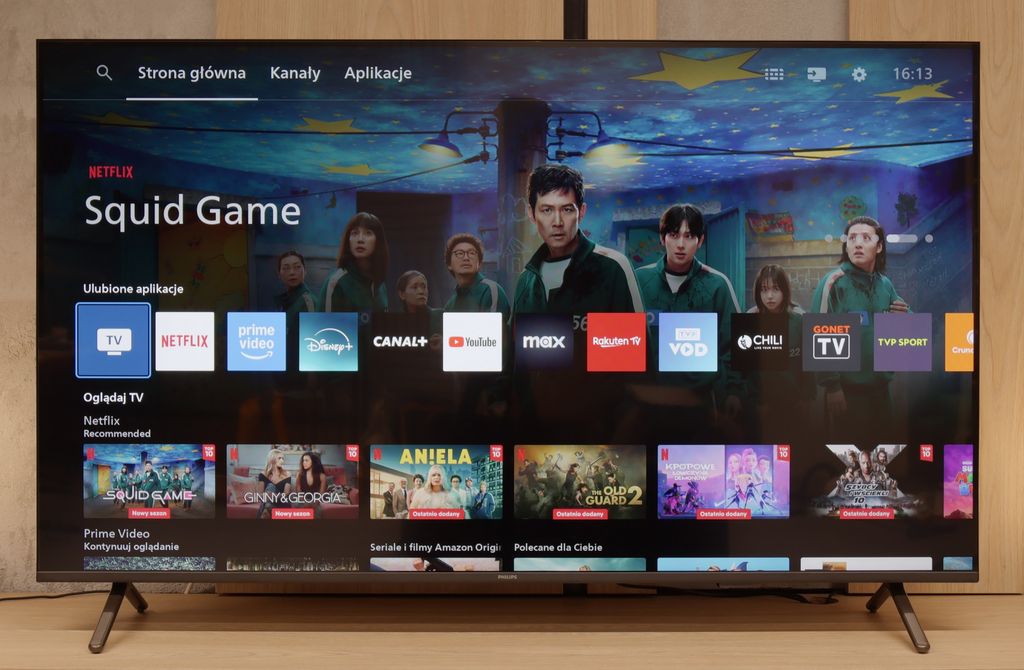
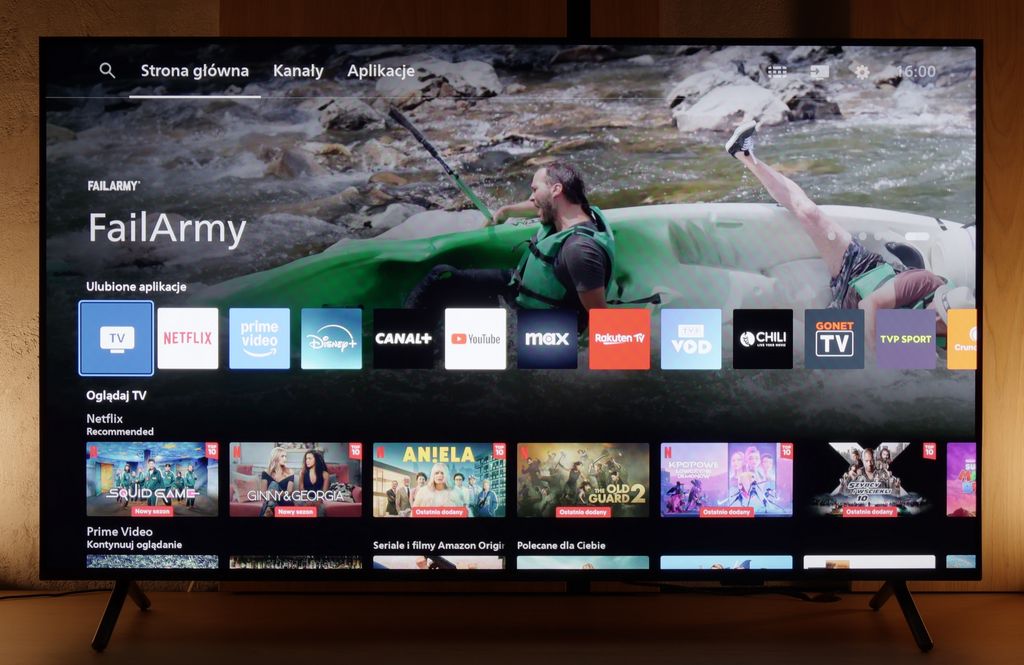
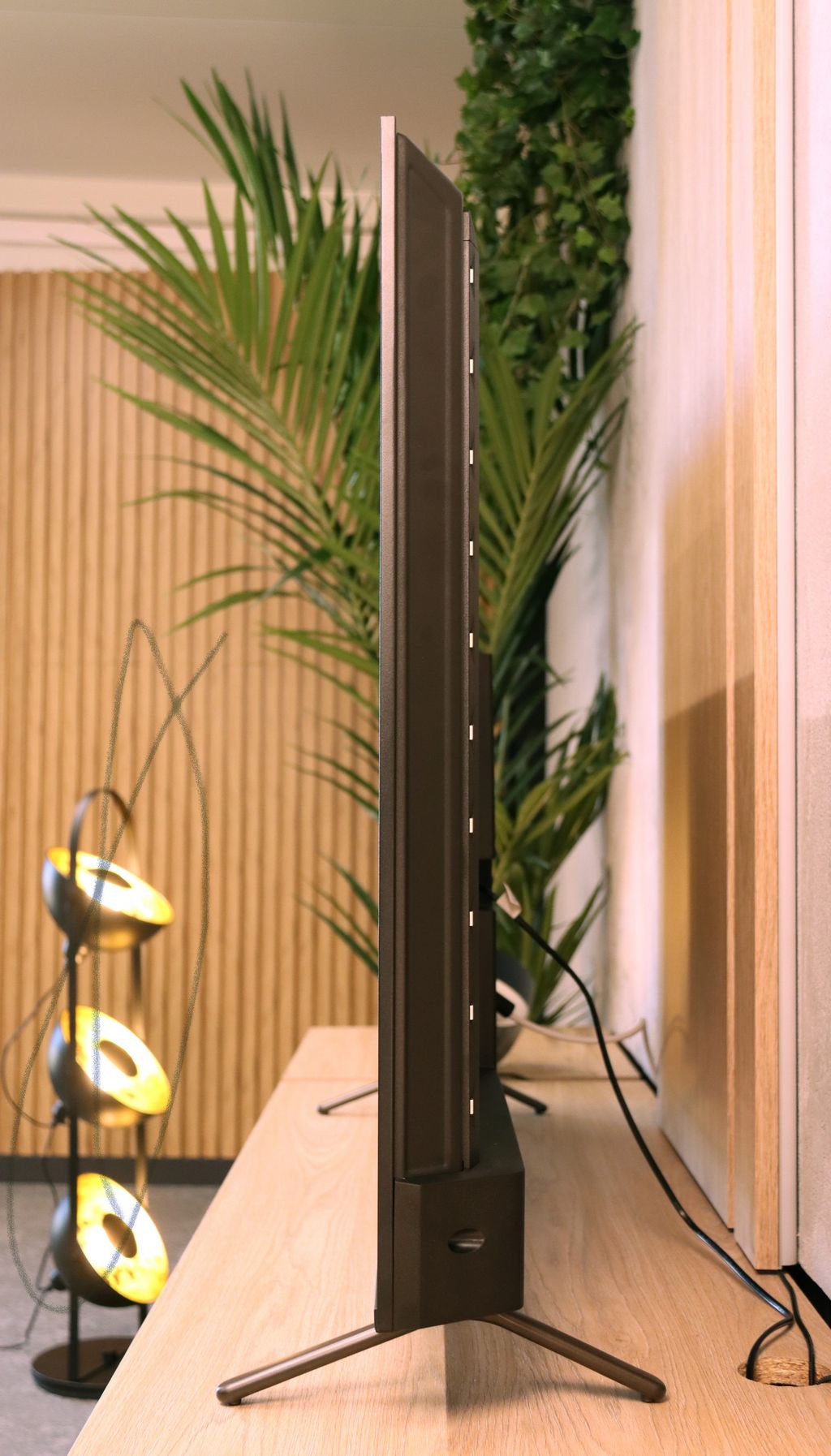
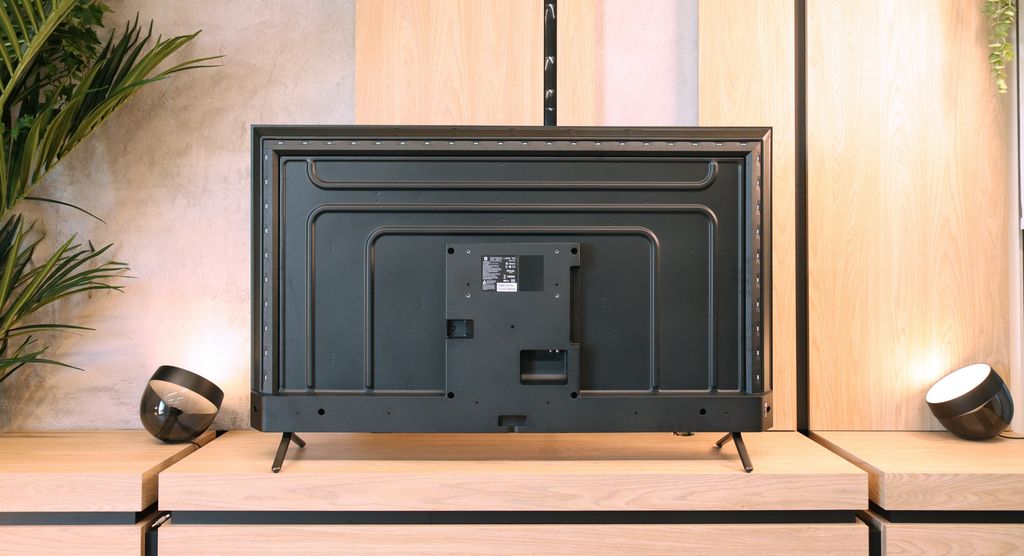
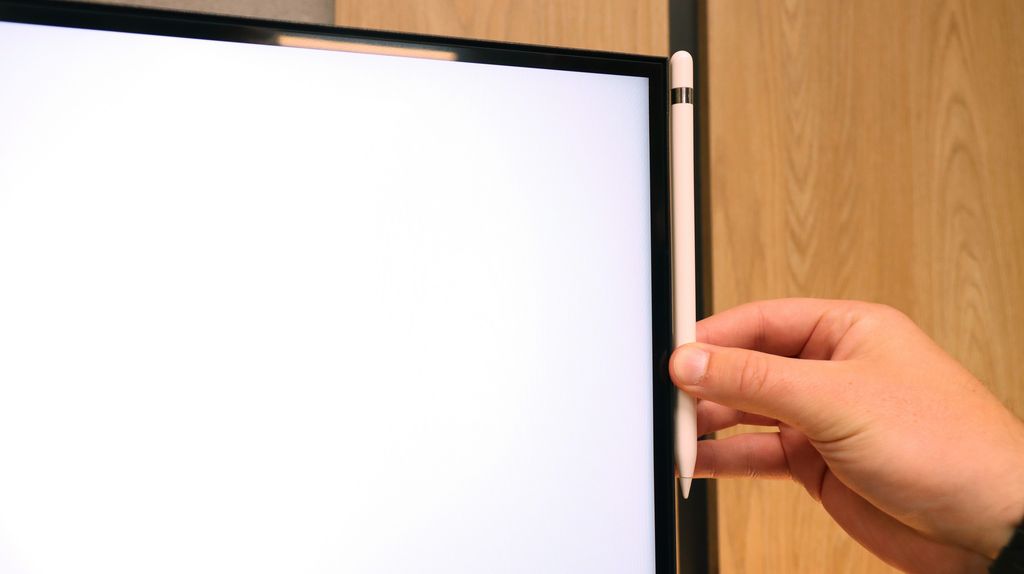
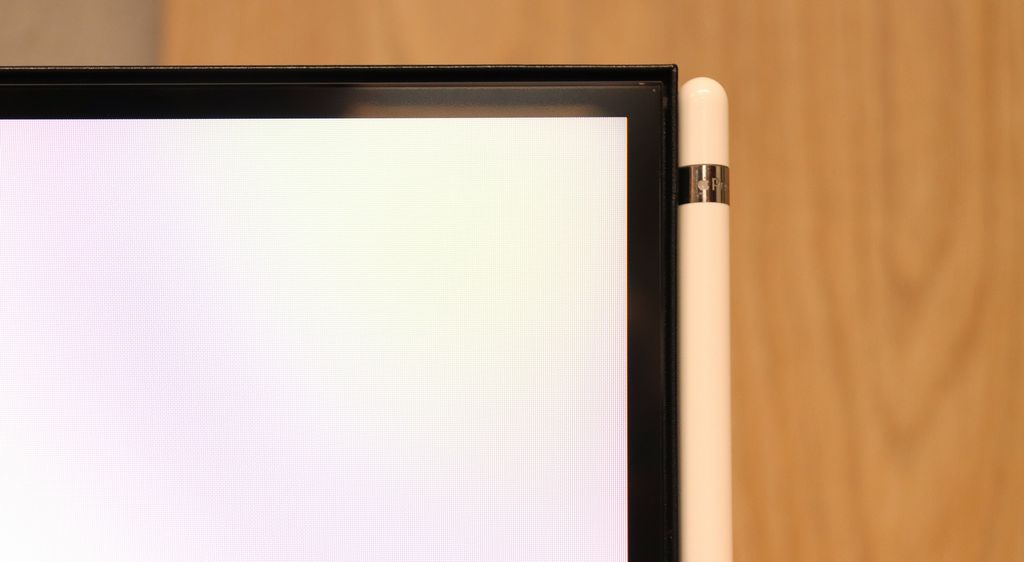

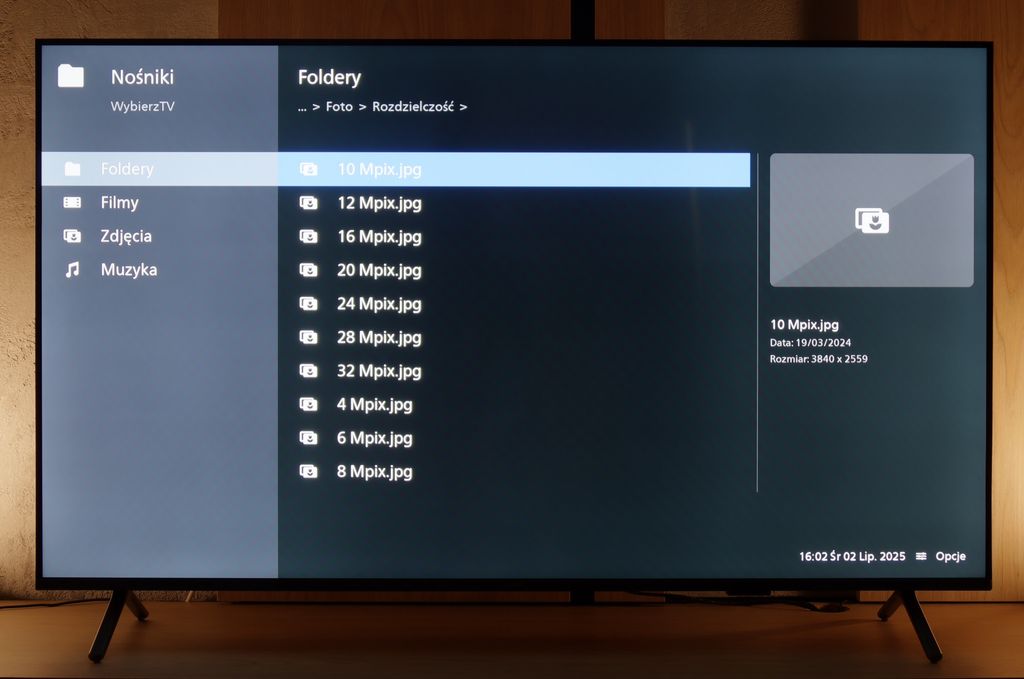
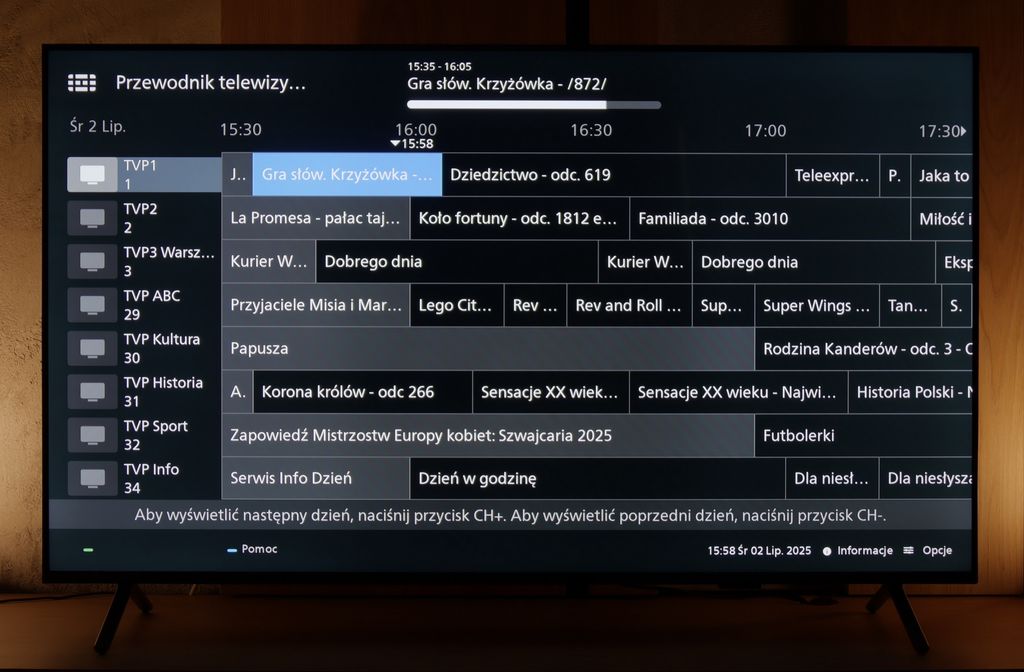
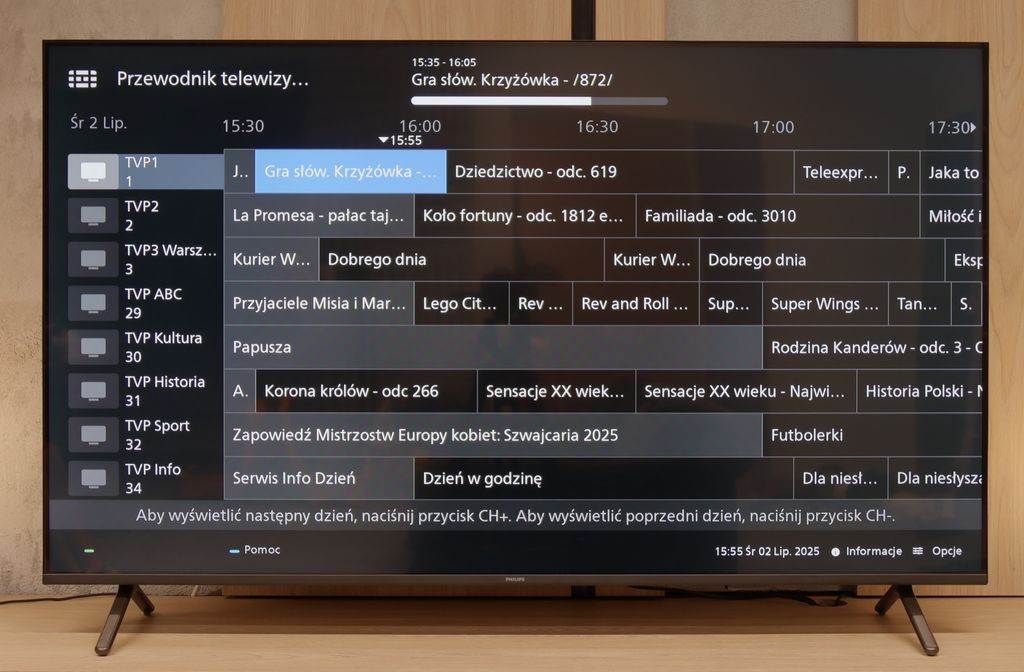
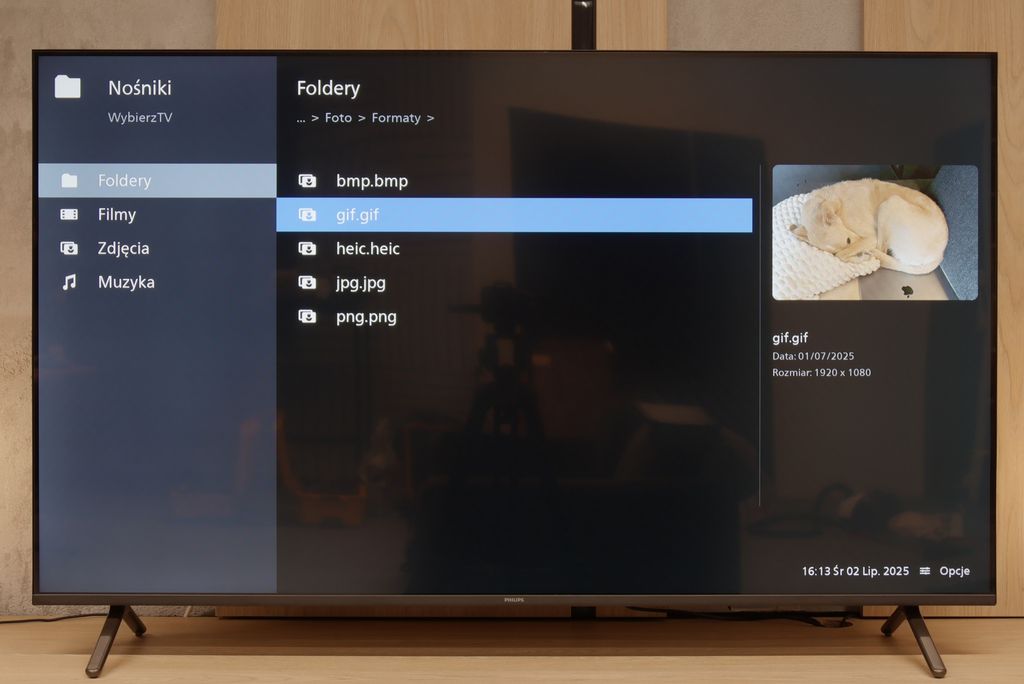
Contrast and black detail
7/10
6.1/10
Local dimming function: Yes, number of zones: 160 (20 x 8)
Local dimming function: No
Contrast:

Result
61,250:1

Result
13,650:1

Result
14,700:1

Result
11,150:1

Result
5,800:1

Result
6,000:1

Result
5,950:1

Result
6,250:1

Result
5,950:1

Result
5,750:1
Halo effect and black detail visibility:

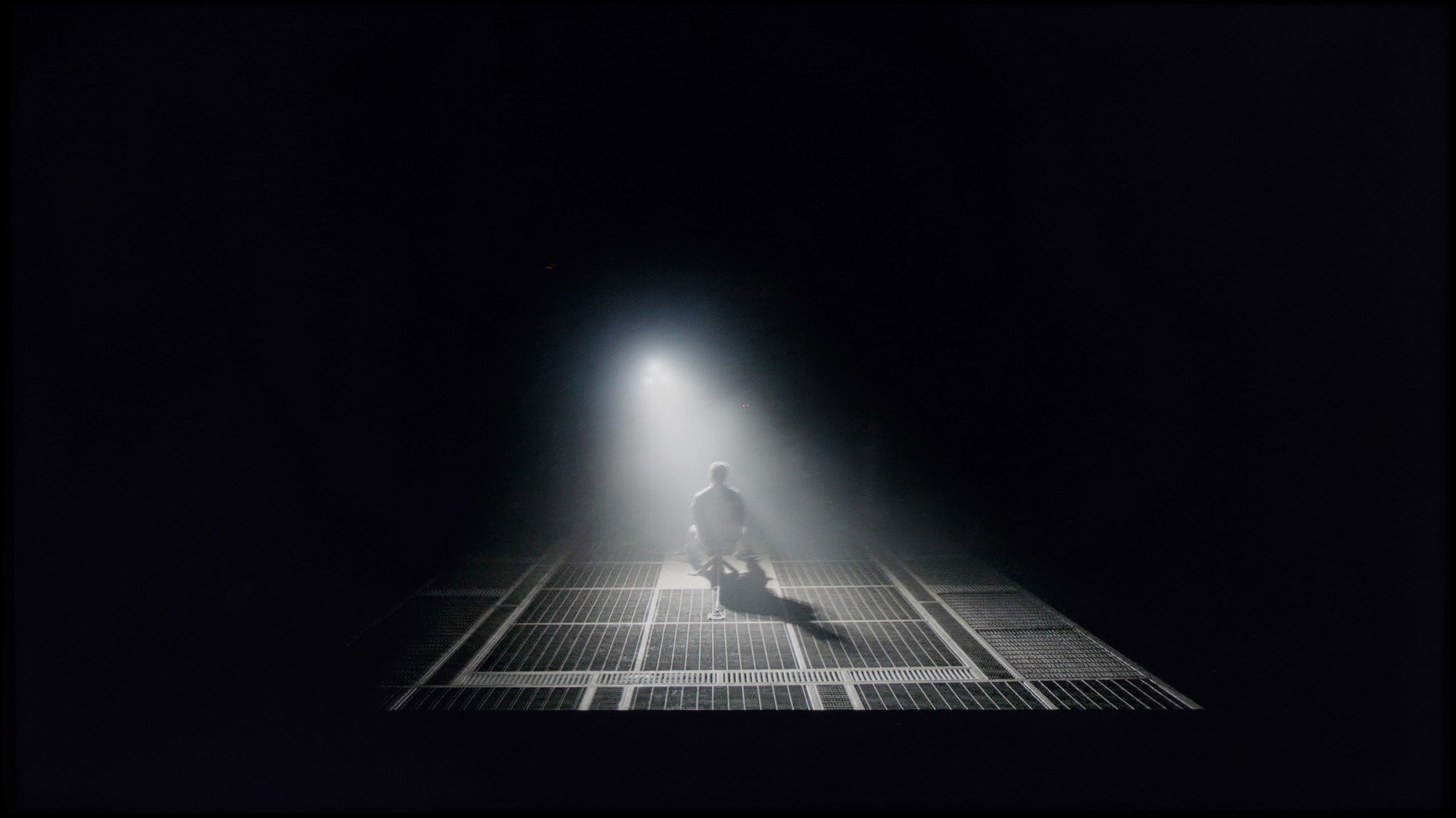
The tested 55-inch model is equipped with a VA panel, which provides deeper blacks compared to IPS/ADS panels. The very use of this technology makes the contrast reach quite a decent level. It is also worth highlighting that the Hisense U6NQ, as a television with MiniLED technology in this version, has 160 local dimming zones, which significantly improves picture quality in many scenes. During testing, for example, in the film Oblivion, the television demonstrated good separation of the hologram lights, and the contrast remained at a satisfactory level. Unfortunately, in more demanding materials, such as the Pioneer Kuro test pattern, a noticeable drop in quality was observed. In such scenes, the dimming zones did not operate correctly, leading to a significant decrease in contrast. Similar issues occurred in scenes from the film Sicario 2, where the blooming effect was clearly visible, suggesting the television's difficulties with precise local dimming management. Despite these shortcomings, the overall contrast level of U6NQ can be considered solid, especially in this price category. The television performs well in most standard scenes, and its capabilities in displaying blacks are better than those of models with other types of panels.
The Philips PUS8560 in the size we tested is equipped with a VA panel. As a result, black levels – as far as LCD televisions go – can be deemed decent. And that is exactly the case with this model. Both black levels and the overall impression of contrast in the film scenes we tested were really quite good – the image does not bleed, and details are visible even in challenging sections.
But the panel alone is not everything. Unfortunately, the PUS8500 does not come with local dimming (which is a given considering the television segment), so one must be aware that in completely dark conditions, the black can resemble shades of navy more than true black. On the other hand – and here’s a plus for Philips – the Ambilight system does an excellent job. The backlighting genuinely affects the perception of contrast. Therefore, even if technically the black is not perfect, subjectively the viewing experience becomes much more pleasurable. For many people, this is enough to make an evening screening truly impressive.
HDR effect quality
5.6/10
4.1/10
Luminance measurements in HDR:

Result
443 nit

Result
426 nit

Result
505 nit

Result
442 nit

Result
448 nit

Result
273 nit

Result
300 nit

Result
324 nit

Result
343 nit

Result
334 nit
Scene from the movie “Pan” (about 2800 nits)


Scene from the movie “Billy Lynn” (about 1100 nits)


Static HDR10


Dynamic: Dolby Vision
Dynamic: HDR10+


HDR luminance chart:
Philips PUS8500
Luminancja HDR
Luminance of RGB colors
Hisense U6NQ
Luminancja HDR
Luminance of RGB colors
Hisense U6NQ offers a stable HDR effect, which is a rarity in TVs with local dimming. On most streaming platforms, in films and series recorded in 4K, the television delivers consistent performance – in every tested scene, regardless of difficulty, the brightness is around 450 nits. This is a pleasant surprise, as in many models of this class, there are notable differences – some scenes are well-lit, while others are heavily dimmed by dimming algorithms. However, the Hisense U6NQ prioritises maintaining higher brightness, which comes at the expense of black levels, as mentioned in the contrast test paragraph.
The HDR effect on the U6NQ is satisfactory, offering a noticeable "burst" of light in bright moments, although it is worth noting the previously mentioned blooming, which may be visible in more challenging scenes. In terms of colours, the television also performs decently – the coverage of the DCI-P3 palette is 89%, and BT.2020 is 71%. Although these are not results that would impress more demanding users, for beginners in the world of high-quality materials, the U6NQ serves as a solid choice. Therefore, it presents an interesting proposition as an "entry-level" television for home cinema.
When it comes to the HDR effect on the PUS8560, it can fairly confidently be stated that it is very average. The panel brightness is around 350 nits, which we consider to be the absolute minimum for watching content in this format. However, this is not a result that will astonish a viewer searching for the best possible picture.
On the plus side, it is worth noting that the PUS8500 series – including the PUS8560/12 we tested – is advertised as a QLED television. And indeed, we can expect a wider colour spectrum here. This model is equipped with an additional filter (PFS), and a DCI-P3 colour coverage of around 90% should suffice for the majority of users. This filter works very similarly to quantum dots. As a result, the colours are quite well saturated. It is not an outstanding result, but it is entirely sufficient for watching films and series from streaming platforms.
Factory color reproduction
8/10
6.2/10


Factory Mode
After calibration

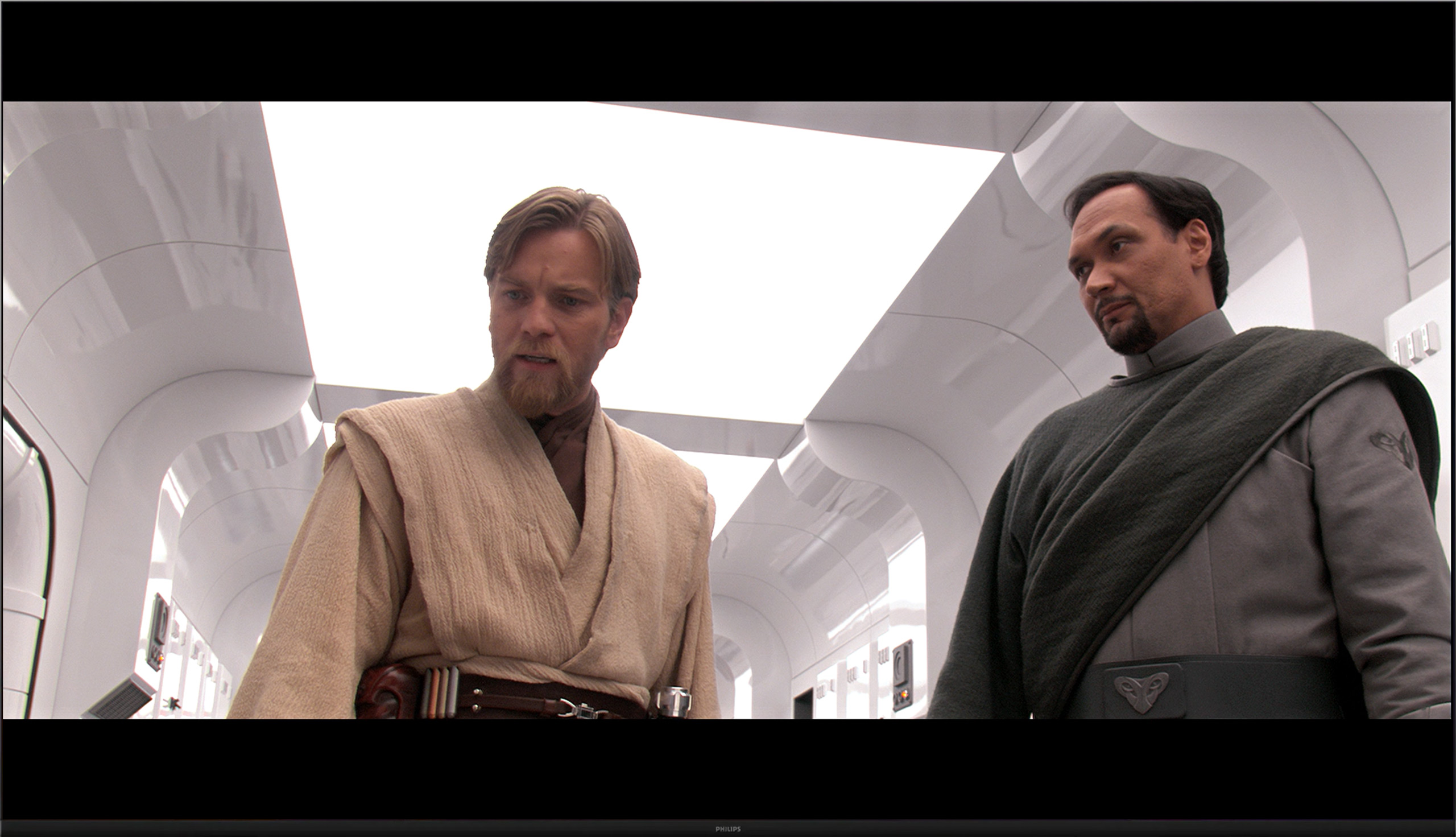
Factory Mode
After calibration
Hisense U6NQ in Filmmaker mode offers really decent colour reproduction, although it's worth noting that differences between individual units can be noticeable. The model we tested was pleasantly surprising, especially with HD content in SDR quality. The white balance was correct here, and errors around 3–4 ΔE should be acceptable for the average viewer. The television performed slightly worse with colour reproduction in 4K HDR materials. The dominance of blue shades led to unnatural cool tones on the Colour Checker chart, giving the image a "store-bought" character. Combined with issues in brightness characteristics – gamma and EOTF curve caused some parts of the image to be too dark – the Filmmaker mode loses some of its credibility in this case. Although the factory settings of the tested unit deserve praise, especially in SDR, there were still minor shortcomings that would require correction to fully exploit the capabilities of the television.
We tested the television with the best available factory settings, namely in Film/Filmmaker mode – this is the mode we recommend for everyday viewing. Unfortunately, it is not without its flaws. Both in HD and HDR content, the image had a noticeable tendency to a pink tint, caused by an excessive amount of red and blue in the white balance. Another issue turned out to be excessive brightness in the image, which was confirmed by both the gamma chart and the EOTF curve. This feature was responsible for loss of detail and washed-out colours in more challenging HDR scenes that we mentioned earlier. The overall result led to significant colour reproduction errors – in extreme cases, the delta E value exceeded 7, while the threshold for visible errors for the human eye is around 3. This situation can be improved with calibration, and you can read about its effects below.
Color reproduction after calibration
8.3/10
8.4/10




Although the factory settings of the Filmmaker mode on the Hisense U6NQ were quite good, we decided to carry out a calibration to fully assess the capabilities of this model. Only after such an adjustment can one see how the television performs under ideal conditions. In the case of SDR content, which was already at a high level, we managed to further improve the white balance. However, the most significant change came from correcting the brightness characteristics – the gamma was optimised and no longer causes excessive dimming of the image, which improves its naturalness.
For 4K HDR content, the calibration also produced positive effects. We eliminated the blue dominance issue, resulting in a more balanced and natural image. However, managing brightness in HDR materials remains a more complex matter. The EOTF curve, while having problems with dimming the image in the 10–30% brightness range in laboratory conditions, reveals other shortcomings in real scenes. The television tends to excessively brighten the smallest elements on the screen. As a result, this leads to visible halo effects around bright objects. This phenomenon, which we mentioned earlier in the context of contrast and HDR, arises from the technological limitations of the particular model and is often difficult to eliminate.
In short: although the Filmmaker mode with factory settings performed decently, calibration allowed us to extract an even better effect – minor adjustments resulted in a more balanced image, especially in HDR content. For users seeking the highest quality picture, calibration will be a beneficial step.
The Dutch manufacturer offers quite a sizable amount of settings in its products, so as usual, we decided to tinker with them a bit. The effects are immediately noticeable – we managed to correct the white balance, which made the image stop appearing excessively pink. The brightness characteristic has also been partially evened out, of course, within the limits set by the television itself. The image is no longer overly exaggerated, and the overall reception after calibration is definitely better than in the factory settings of the Filmmaker mode.
One could only critique the EOTF curve characteristic, which still indicates that the image has a tendency to brighten HDR materials. Despite our efforts, the darkest parts of scenes are still sometimes too bright, and the brightest ones do not always achieve their full contrast potential. However, it must be clearly stated that we are dealing with a typically budget construction – one cannot expect reference-level reproduction of HDR content from it.
Calibration has definitely helped this model – it improved the balance, toned down the aggressive colour palette, and brought the image closer to what one might expect from a well-configured movie mode. However, there are certain limitations that cannot be overcome.
Smoothness of tonal transitions
7.8/10
6.3/10





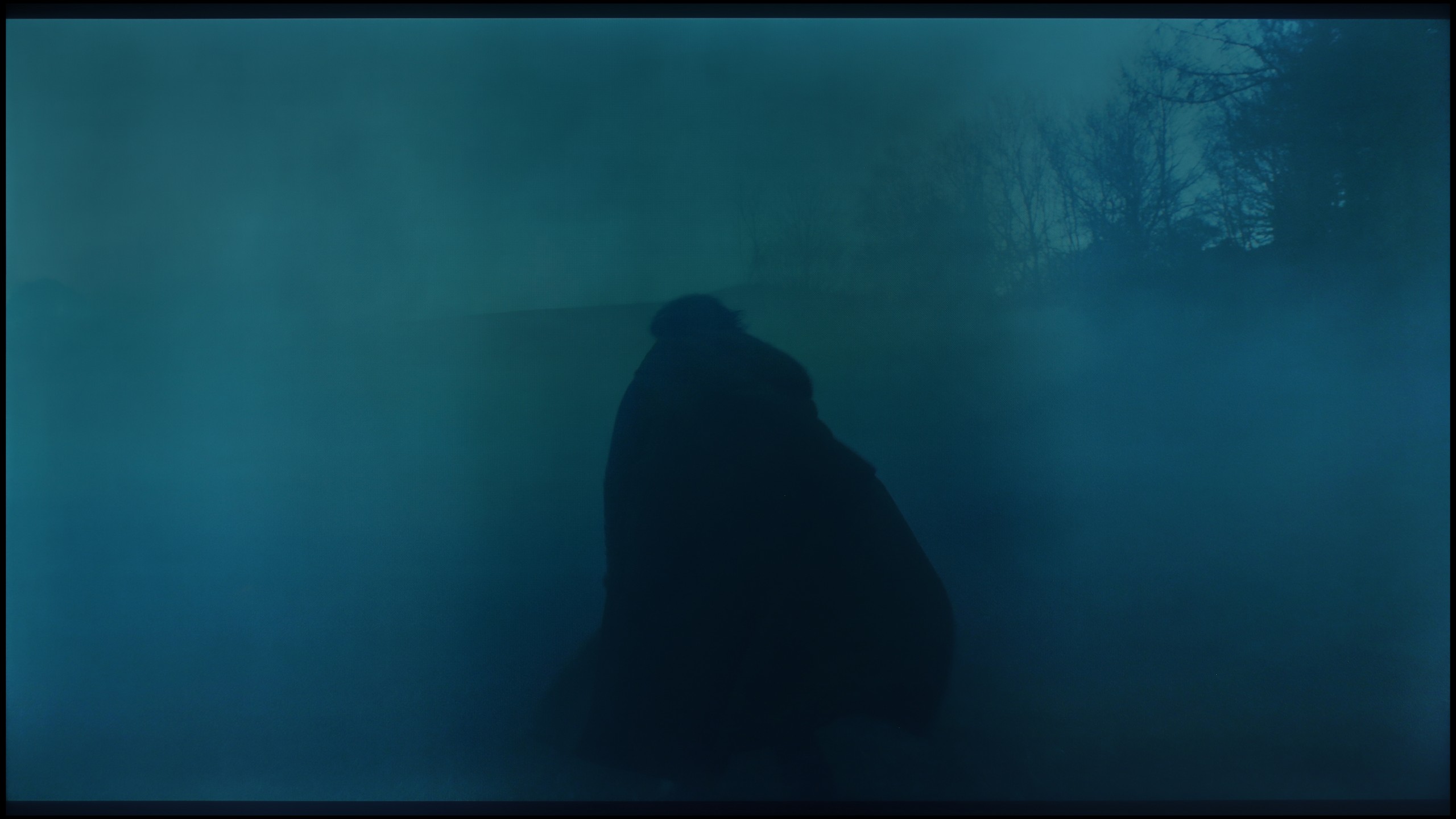

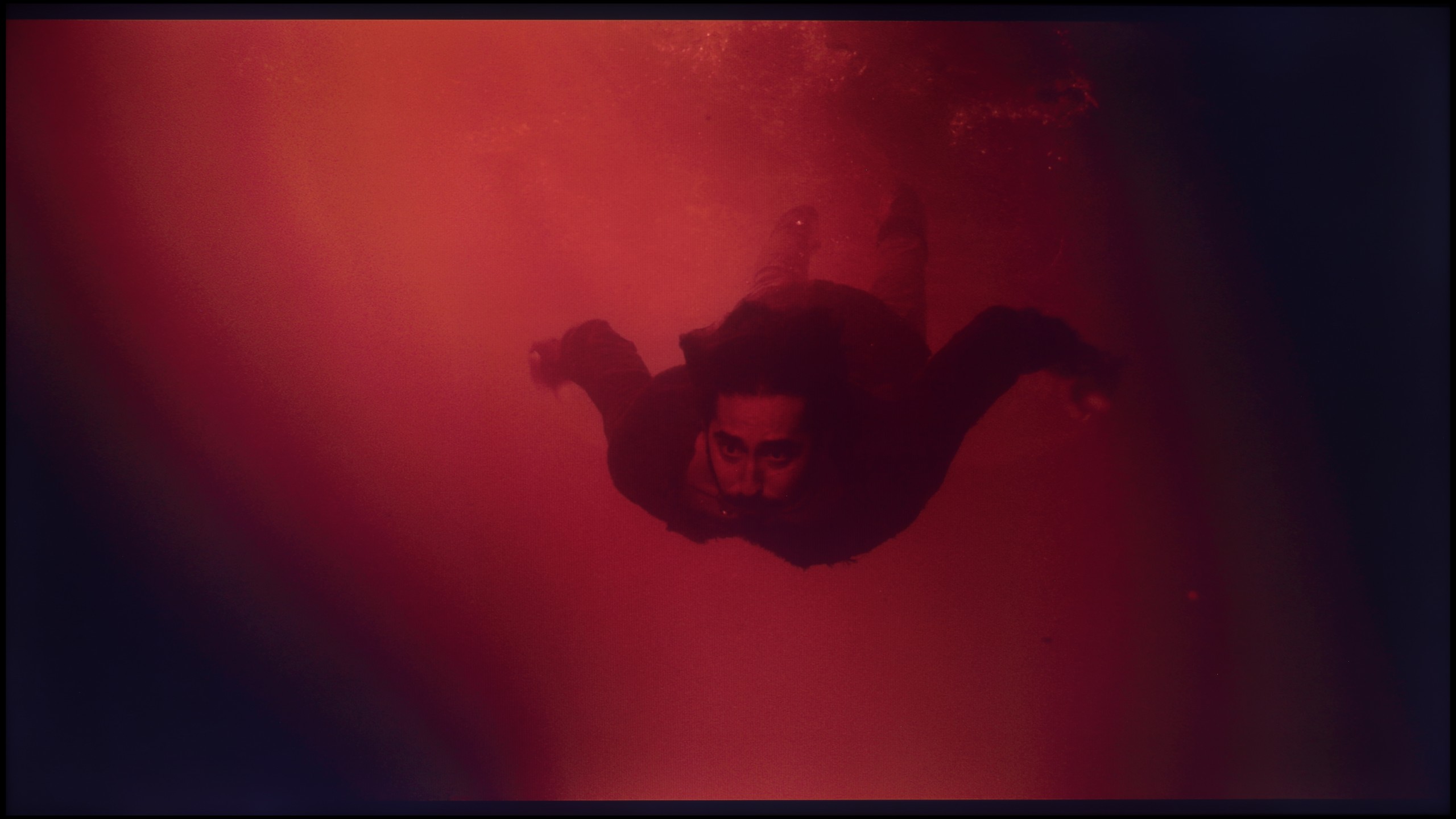




The fluidity of tonal transitions in Hisense U6NQ is at a very good level. In most scenes, there are no visible issues with colour blending, which ensures a pleasant and cohesive visual experience. However, a more discerning eye may spot slight imperfections in specific instances, such as the scene with the blue sky in Kingsman or the final scene with the red background. These subtle shortcomings are, however, small enough not to affect the image perception for most users. Overall, the television performs very well in this category.
The PUS8560 handles colour transitions into smooth gradients very well. During tests, the image appeared coherent and natural, and serious issues with tonal transitions occurred only in very dark scenes – for example, in a shot with red water, where subtle cuts between colours could be noticed. However, these are rather exceptions that do not spoil the reception of most content. It is worth mentioning another phenomenon that more significantly affects the quality of the image – the so-called dithering, which refers to a slight "tingling" visible on uniform backgrounds. This effect can be particularly noticeable in high-quality materials and can somewhat spoil the impression of image clarity. It is for this flaw that we deducted some points in our evaluation.
Image scaling and smoothness of tonal transitions
5.6/10
6.1/10
Smooth transition function

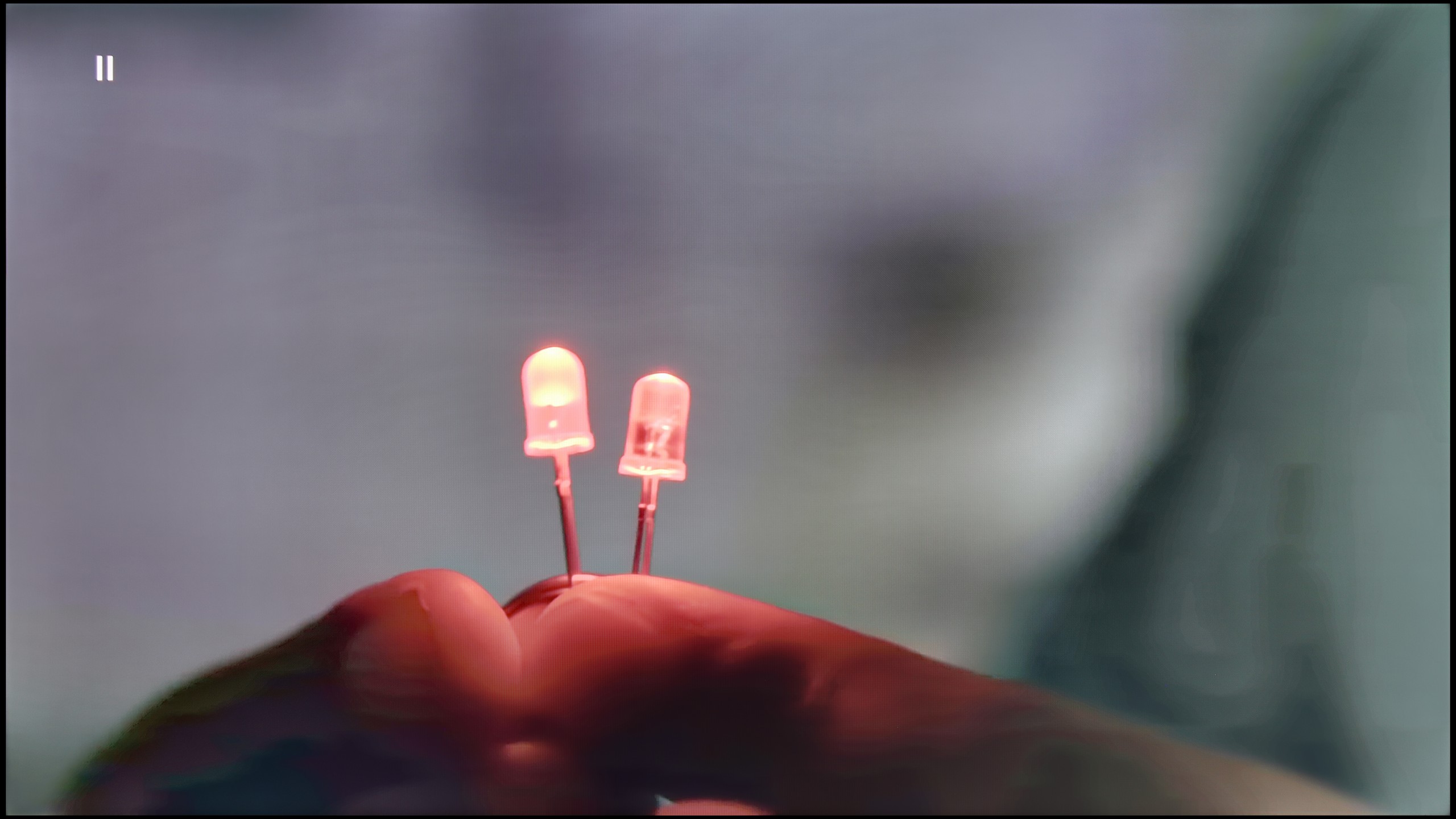
Image without overscan on the SD signal


With high-quality materials, such as 4K, tonal transitions on U6NQ look really good – the colours blend nicely, and the image is coherent. Unfortunately, when we move to content in lower resolutions, the television does not offer any additional features that could improve this aspect. An example is the test with the light bulb, where it is clearly visible that the television has a problem with rendering subtle tonal transitions.
However, digital processing performs quite well. The image looks pliable, is pleasantly soft, and free from excessive banding. Moreover, thanks to the sharpness settings, it can be adjusted according to personal preferences – whether towards a softer or sharper image. Overall, although scaling lower quality materials could be better, the television handles image processing effectively.
Philips PUS8560 offers a function for reducing posterization, hidden under the name "distortion reduction". And although it indeed fulfills its role by smoothing out problematic tonal transitions, it works a bit too broadly. In practice, it affects not only colourful gradients but also softens faces, the textures of clothing, and the surfaces of furniture. This compromises the authenticity of the image – especially in films where natural texture is very important. However, if someone is looking for smoothing at all costs, it's best to set this option to "Low". For cinema image enthusiasts – we definitely do not recommend it.
On the positive side, the quality of upscaling older materials is noteworthy – the PUS8560 model handles them surprisingly well. The image retains its natural softness, without artificially boosted sharpness. It is also worth mentioning that the television correctly displays content with very low resolution, avoiding issues with image edge cutting (so-called overscan).
Blur and motion smoothness
3.4/10
4/10


Blur (native resolution, maximum refresh rate):





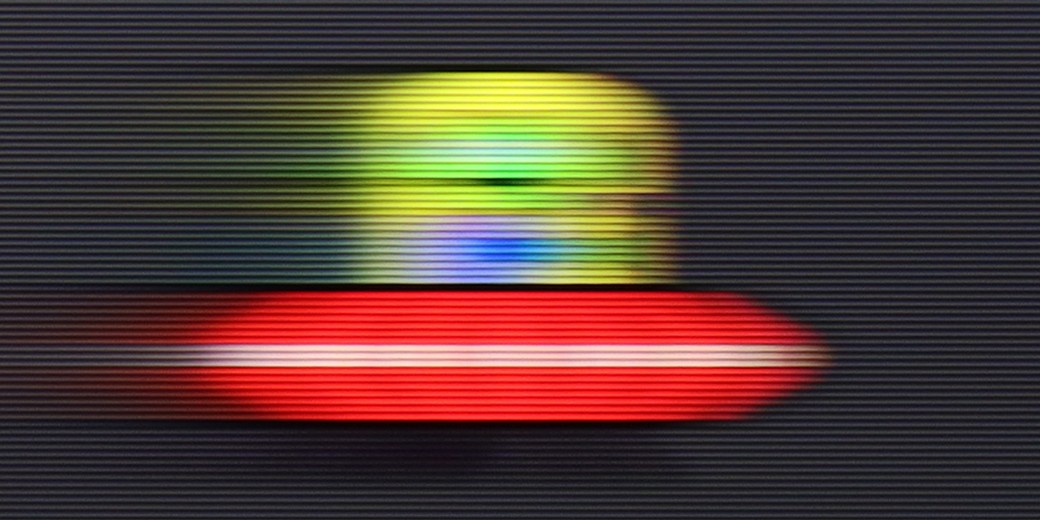
Hisense U6NQ offers native 60 Hz refresh rate at 4K resolution, but the manufacturer has added a feature that allows the refresh rate to be increased to 120 Hz, at the cost of reducing the resolution to Full HD. This solution, which we have seen before in TCL televisions, such as the C655 or C655 PRO. This gives the user the choice – higher motion fluidity or full resolution. This is a sensible approach, especially considering that many games on next-generation consoles do not achieve full performance in 4K at 120 Hz.
As for movies, the television is equipped with a motion smoothing feature that allows you to adjust the motion characteristics to your own preferences. This allows for a more cinematic effect or increased fluidity in dynamic scenes. Overall, Hisense U6NQ offers reasonable solutions in terms of motion fluidity that should satisfy both gamers and movie enthusiasts.
The Philips PUS8560 is a television equipped with a panel featuring a refresh rate of 60 Hz, which immediately limits its capabilities in terms of displaying dynamic content. Watching sports or playing on a console is not particularly enjoyable. The situation is further worsened by the lack of any option to improve the smoothness of films. In the menu, we won't find settings that would allow us to enable a motion smoother or even a slight motion smoothing for films recorded at 24 frames per second. You can imagine the effect. The image can appear jerky, especially in shots with panoramic camera movements.
Console compatibility and gaming features
6.3/10
4.7/10
- ALLM
- VRR
- VRR range48 - 60Hz48 - 60Hz
- Dolby Vision Game Mode
- Correct implementation of HGIG
- 1080p@120Hz
- 1440p@120Hz
- 4K@120Hz
- Game bar

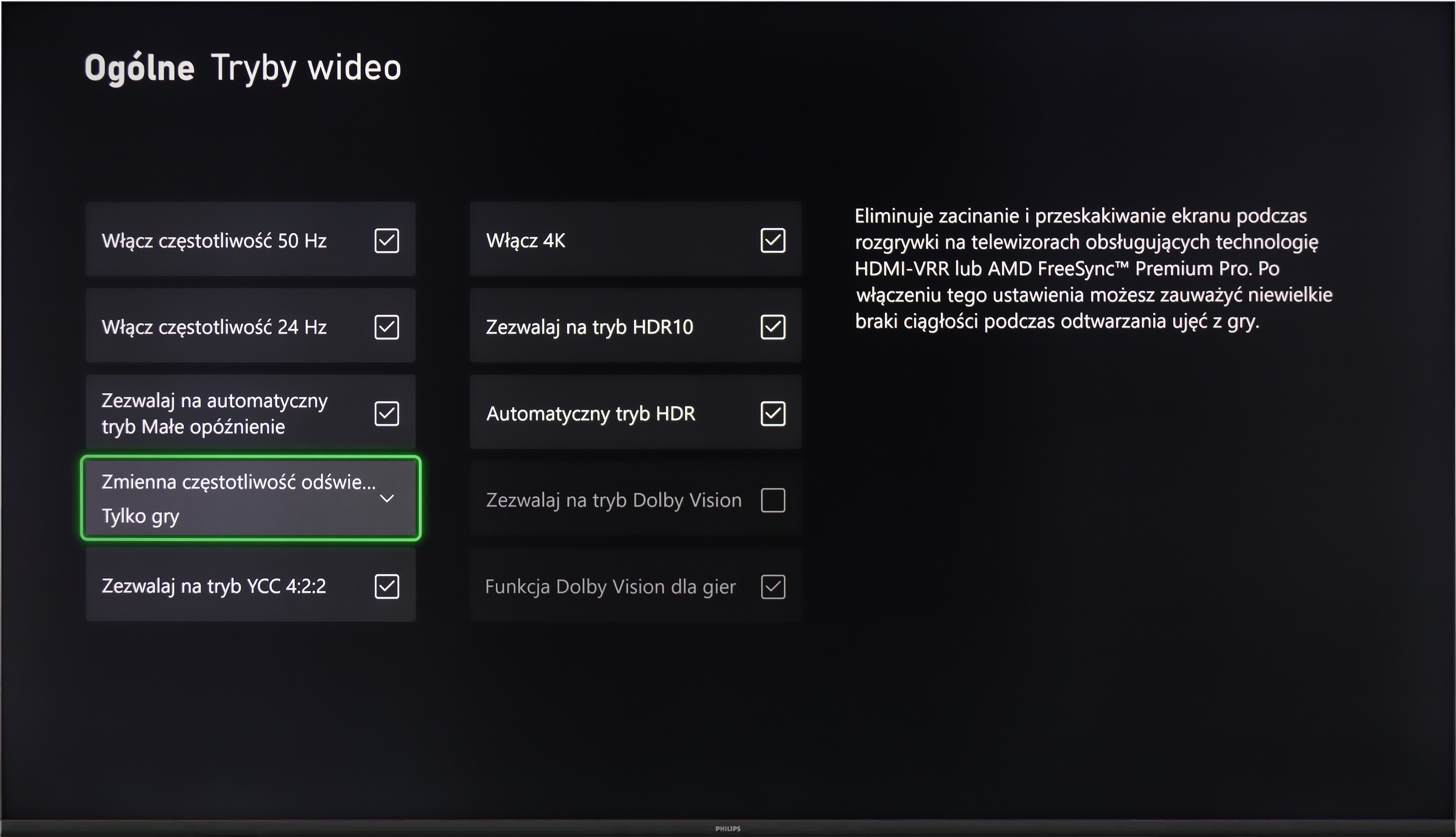

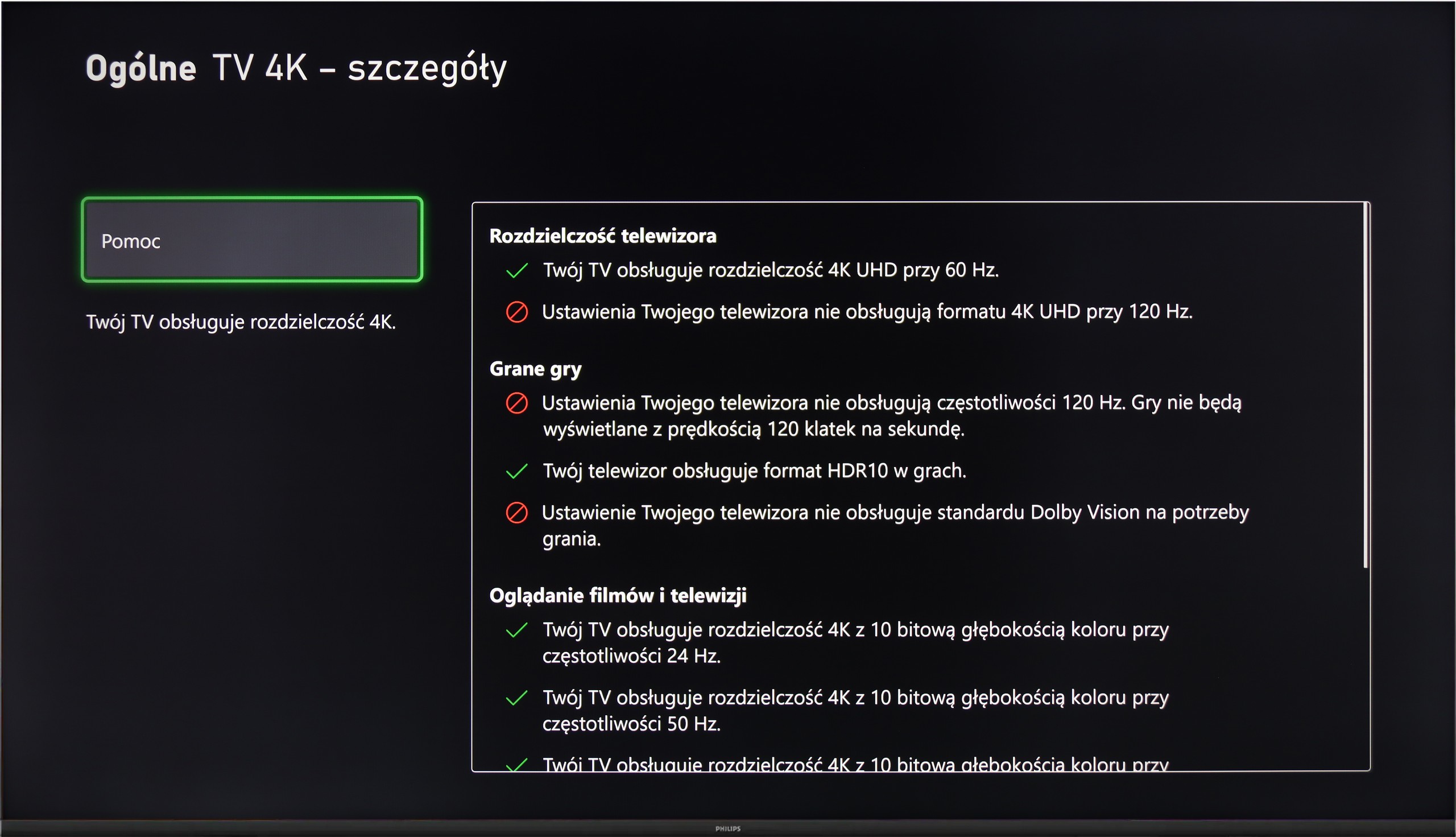

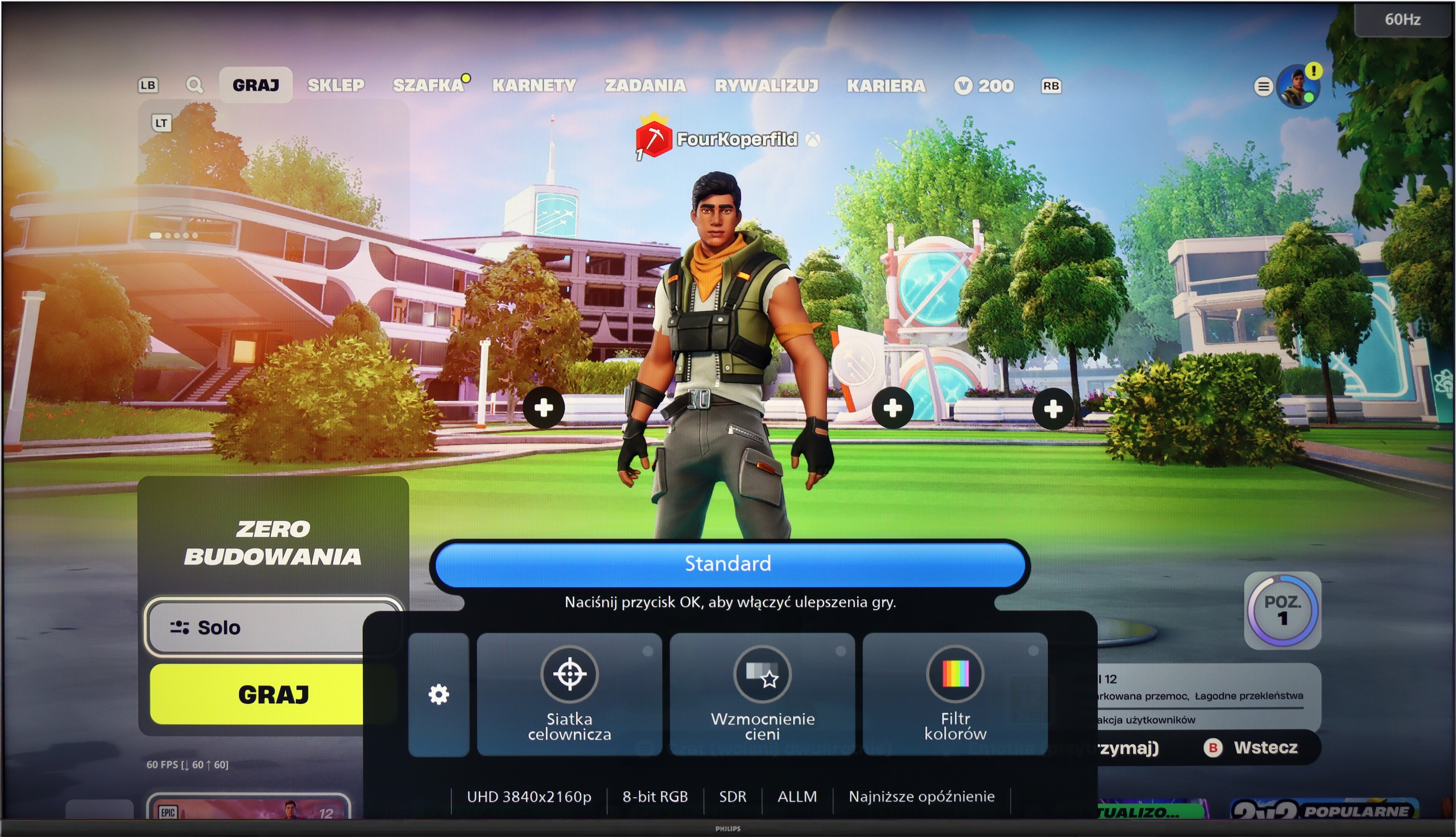

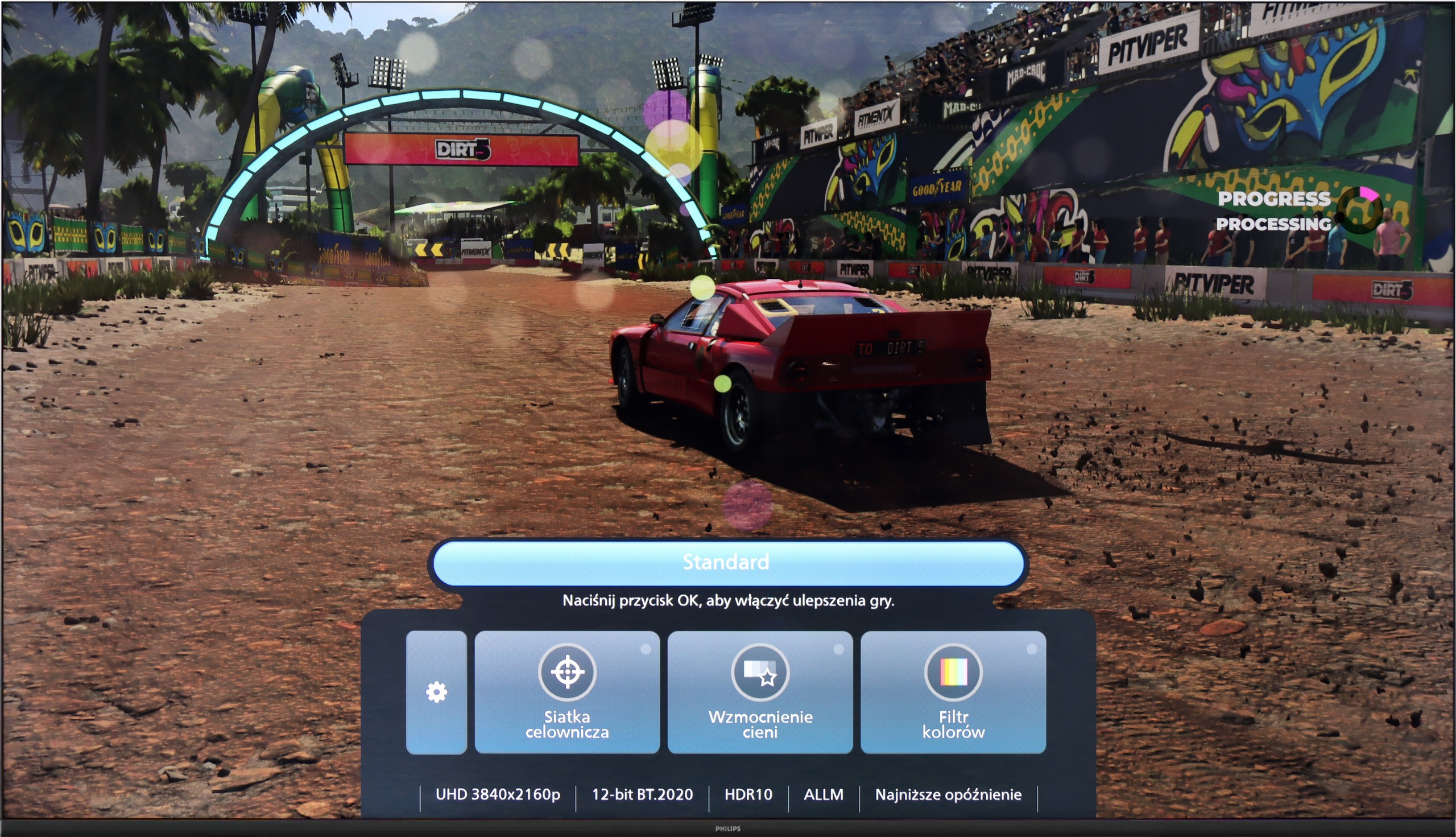
Hisense U6NQ offers the option to choose between 4K at 60 Hz and Full HD with a refresh rate of 120 Hz. This solution may appeal to gamers who want to decide what is more important to them – higher resolution or smoothness. The television supports features such as ALLM and VRR, which help in achieving smoother gameplay. A nice addition is the GameBar – an easy-to-use panel that allows you to quickly change picture settings and check statistics. There is also a Dolby Vision Game mode, which operates with low input lag, which is a big plus for console enthusiasts. Unfortunately, it lacks HGiG, which could further enhance HDR quality in games. Nevertheless, the Hisense U6NQ performs quite well as a gaming television, especially for those who play occasionally and do not require the highest refresh rates in 4K. It is a solid choice for less demanding users.
Although the Philips PUS8560 is not designed with gamers in mind, the manufacturer has decided to equip it with a few features that may prove useful when connecting a console. On board, we find automatic switching to game mode (ALLM), as well as a simple connection status information bar – the so-called Game Bar. It does not make a particularly strong visual impression, but it serves its purpose. The presence of variable refresh rate (VRR), operating in the range of 48 to 60 Hz, may come as a surprise. While this is not a wide range, in the case of less demanding games or titles with unstable frame rates, VRR can help reduce screen tearing. However, this is the only element that could be considered beyond the minimum.
It must be made clear that the PUS8560 is not equipment for gamers looking for a responsive screen and full support for modern console features. It lacks HDMI 2.1 ports, the refresh rate is limited to 60 Hz, and the response time of the panel is not among the fastest. This model may be suitable at most for casual gamers who want to enjoy the Ambilight system.
Input lag
9.9/10
10/10
SDR
HDR
Dolby Vision
The television Hisense U6NQ offers a very low input lag of 14 ms, making it a good choice for gamers, especially those who prefer fast-paced titles. It is also worth noting that the Dolby Vision mode in games works really well here. This is a pleasant surprise, as on many other televisions this HDR mode performs only averagely.
The input lag on the PUS8560 is very good. When we previously mentioned that this screen is rather for the "casual gamer," there is nothing to be ashamed of in this regard – even when compared to screens aimed at gamers. Results around 12 ms are truly outstanding, allowing for an enjoyable responsive gameplay experience. It doesn't matter whether we are playing in Full HD or 4K – the lag remains equally low, so if you value a quick response time, the PUS8560 will definitely not disappoint in this aspect.
Compatibility with PC
6/10
5.6/10

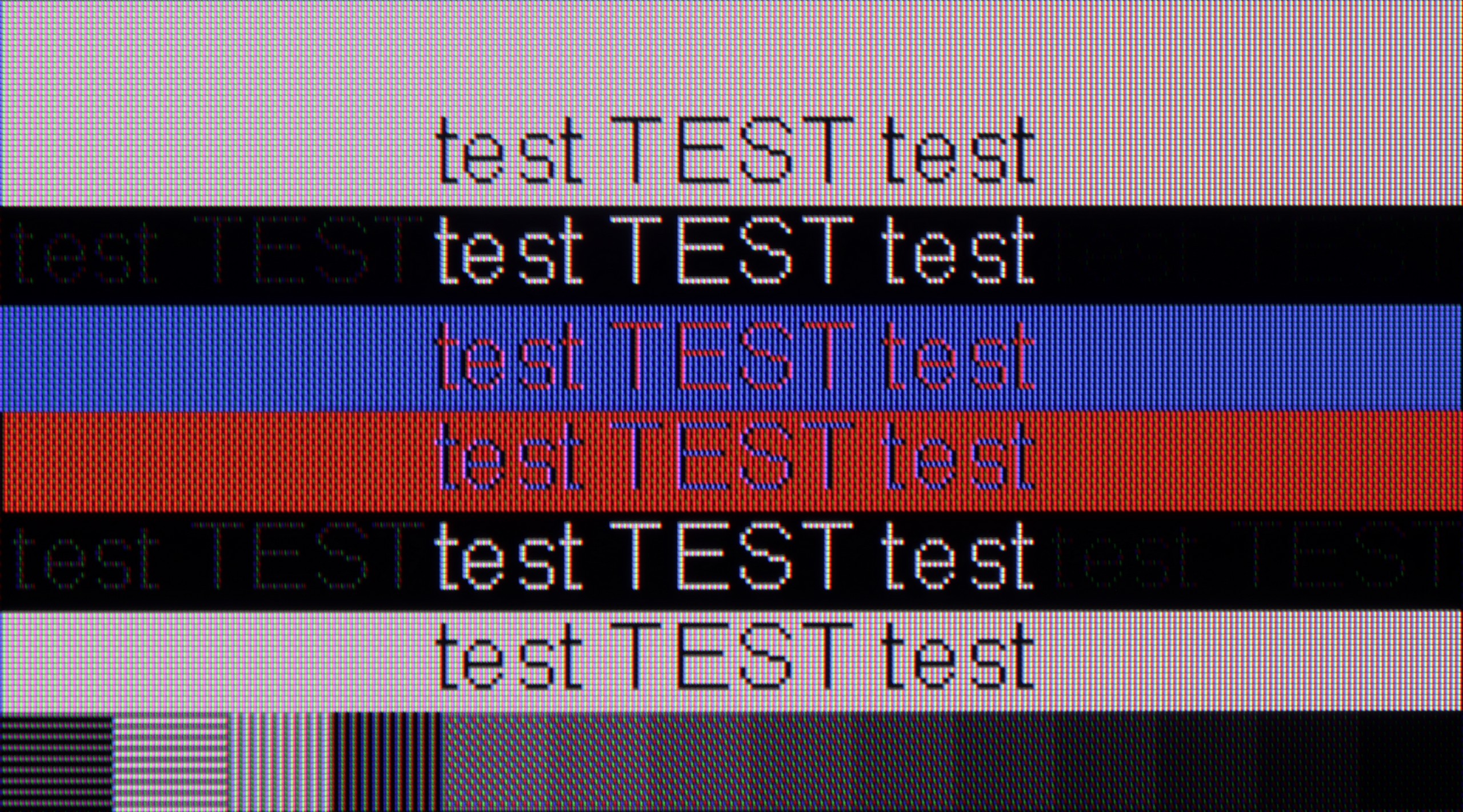
As a screen for working with a computer, Hisense U6NQ performs quite well. The fonts are sufficiently clear, making it adequate for everyday writing or browsing the internet.
When it comes to gaming, the television supports G-Sync, but only at 4K resolution at 60 Hz. Unfortunately, if anyone was hoping for 120 Hz fluidity in 1080p with G-Sync enabled, they may be disappointed – this television does not offer that. It's somewhat unfortunate, as it could have been a decent solution for gamers who prefer smoothness over resolution.
When it comes to working with a PC on the PUS8560, it looks... quite strange. Chroma 4:4:4 is present in "Monitor" mode, but there is a problem with grey fonts – not all subpixels are lit, which results in the text appearing jagged. On the other hand, in "Game" mode – chroma 4:4:4 disappears, but the grey fonts look correct. In practice, we are therefore forced to juggle settings if we want to have perfectly readable text at all times. And what about gaming on the computer? Our opinion remains the same as for consoles – it is doable, but without fireworks. There is no variable refresh rate for G-SYNC graphics cards, and the refresh rate itself remains relatively low. However, we can once again highlight the very low input lag, which saves the situation in dynamic games.
Viewing angles
3/10
3.3/10
The viewing angles on the Hisense U6NQ are average, which is typical for VA panels. Thanks to this technology, we gain better contrast and deeper blacks, but at the cost of image visibility at wider angles. It's a classic compromise – in televisions with IPS panels, the situation is reversed, where viewing angles are wider, but contrast and blacks suffer in quality.
The viewing angles on the PUS8560 are precisely what one would expect from a VA panel - it's not the best. The image loses quality even with a slight shift off-axis – colours become washed out and black begins to resemble a dark navy. This is, of course, the price paid for the better contrast that VA offers when viewed directly. In the case of our 55-inch model, this is still acceptable, especially if the television is positioned perfectly opposite the sofa. However, with larger screen sizes or a less central placement in the living room – it could become a problem for comfortable viewing.
TV efficiency during daytime
6.1/10
4.9/10

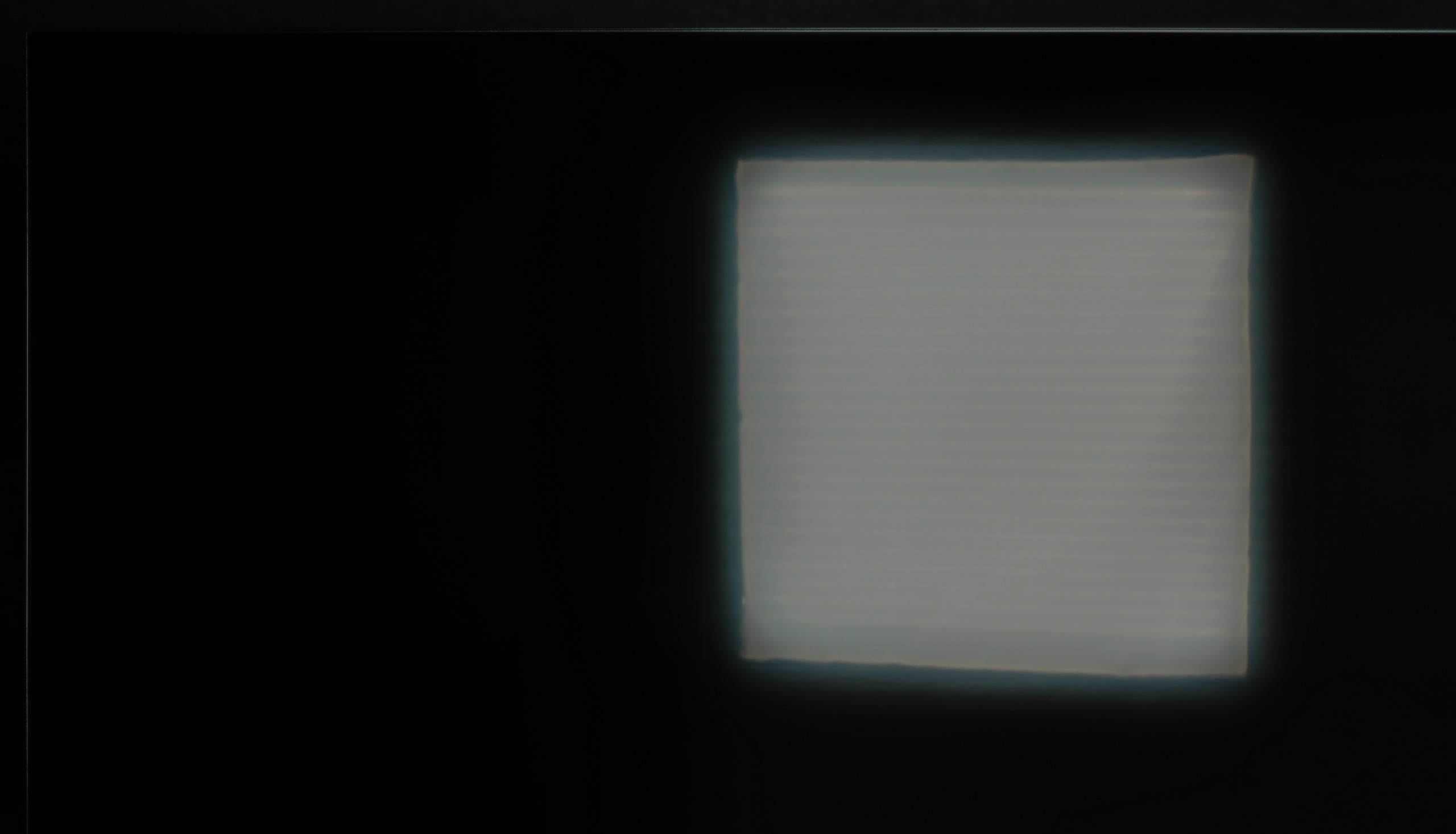

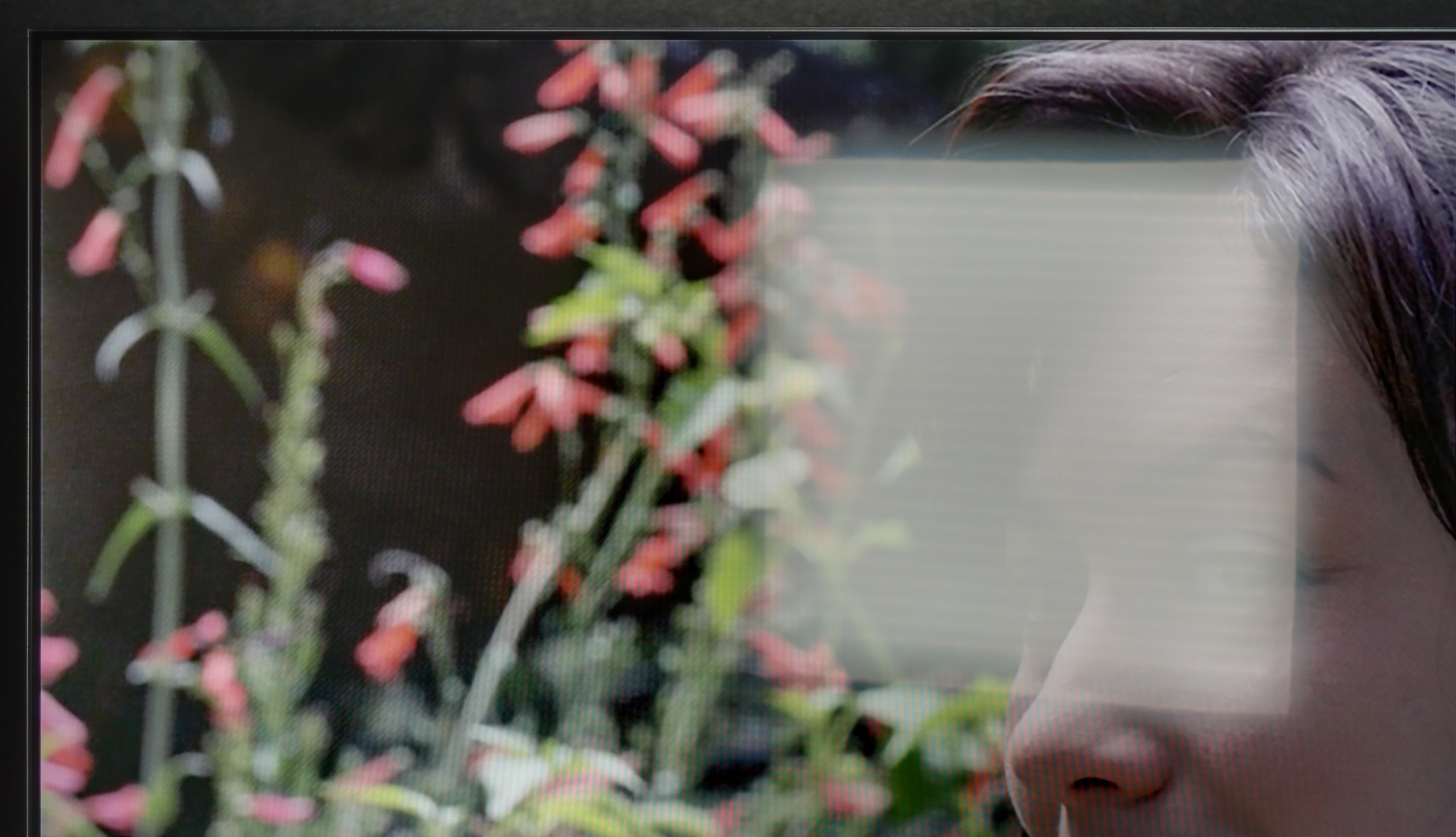
Matrix brightness
Average luminance SDR
Philips PUS8500 : 331 cd/m2
Hisense U6NQ: 488 cd/m2
Hisense U6NQ performs well in bright rooms thanks to the satin finish on the panel, which effectively suppresses reflections. The average brightness on SDR content, such as standard television, is 488 cd/m², which is more than sufficient for comfortable viewing even under slightly challenging lighting conditions.
The PUS8560 performs moderately during the day. The satin matrix coating quite effectively dampens reflections, which means that light from windows or lamps does not interfere too much. The blacks also look decent for a VA panel – even in daylight, there are no significant losses in contrast. However, all the charm fades when it gets really bright. The panel's brightness is around 300 nits, which is definitely too little to speak of full comfort in a heavily lit room. In such conditions, the PUS8560 simply needs to be aided by blinds – otherwise, the image begins to look rather pale.
Details about the matrix
Subpixel Structure:

Panel uniformity:


TV features
8.9/10
4.9/10
- HDMI inputs3 x HDMI 2.0, 0 x HDMI 2.13 x HDMI 2.0, 0 x HDMI 2.1
- Other inputsRCA (Chinch)
- OutputsToslink (Optical audio), eARC (HDMI), ARC (HDMI), Mini-Jack (Headphones)Toslink (Optical audio), eARC (HDMI), ARC (HDMI), Mini-Jack (Headphones)
- Network InterfacesWi-Fi 2.4GHz, Wi-Fi 5GHz, Ethernet (LAN) 100MbpsWi-Fi 2.4GHz, Wi-Fi 5GHz, Ethernet (LAN) 100Mbps
- TV receptionDVB-T, DVB-T2, DVB-S, DVB-S2, DVB-CDVB-T, DVB-T2, DVB-S, DVB-S2, DVB-C
Classic features:
- Recording to USB (terrestrial TV)
- Recording programming
- Picture in Picture (PiP)
- RF remote control (no need to aim at the screen)
- Backlit remote control
- Teletext
- Audio only mode
- Possibility to connect Bluetooth headphones to the TV
- Possibility to simultaneously use Bluetooth headphones and the TV speaker
Smart features:
- AirPlay
- Screen mirroring (Windows Miracast)
- Wyszukiwanie głosowe
- Voice search in native language
- Ability to connect a keyboard and mouse


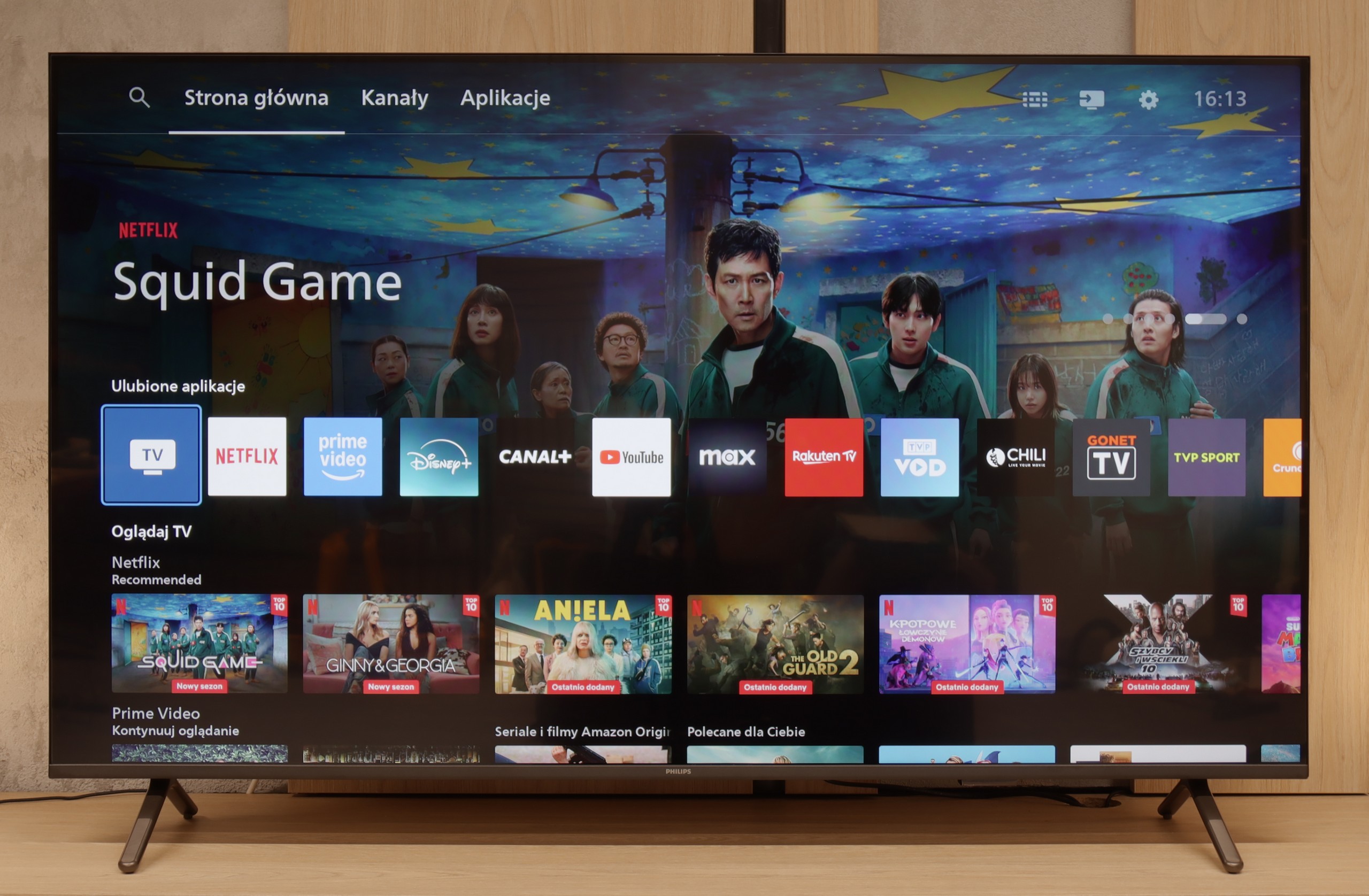
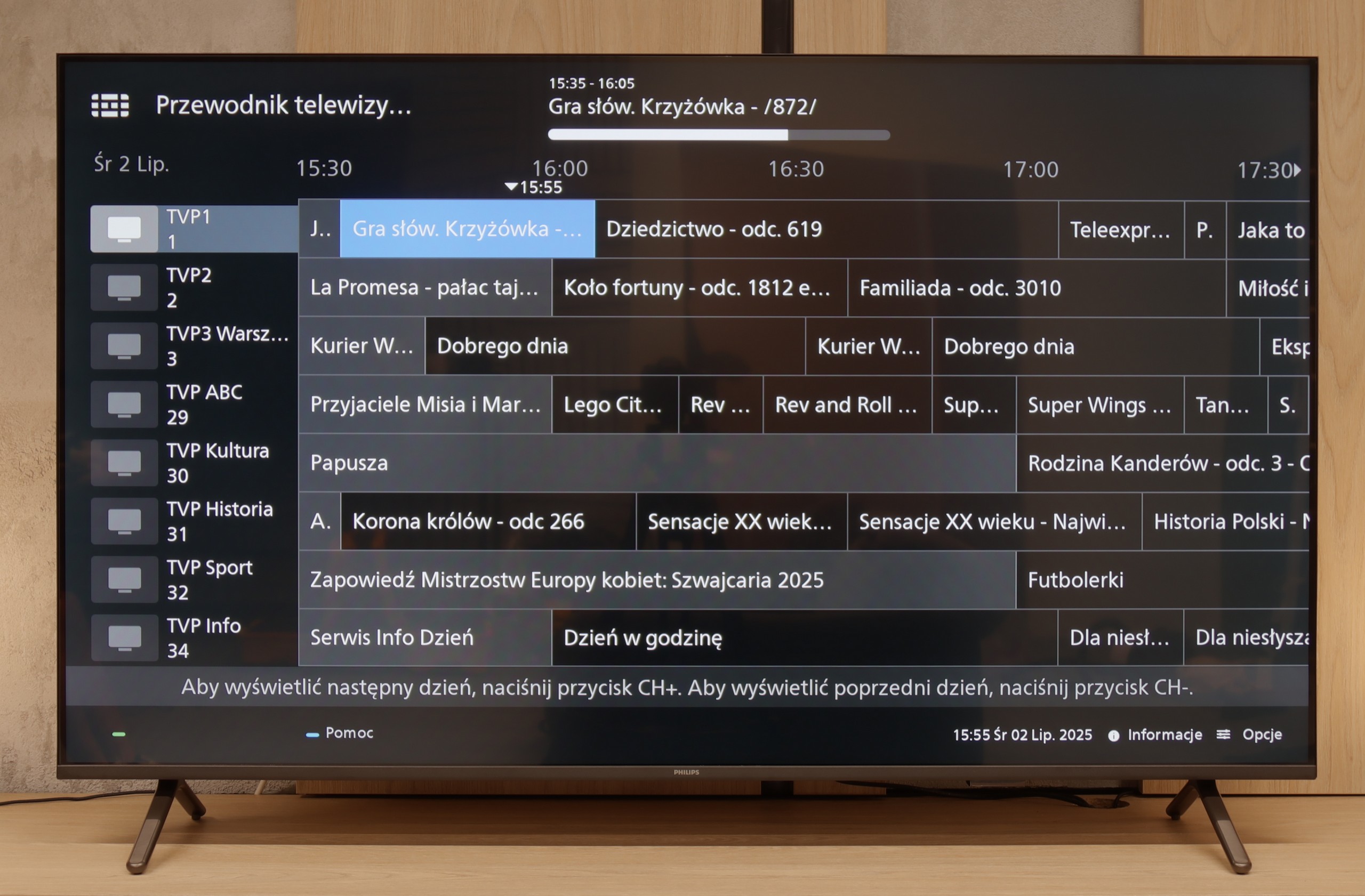
The Vidaa system, on which the Hisense U6NQ operates, is probably one of its stronger points. It is quick, runs smoothly, and most importantly – it doesn’t suffer from any stuttering that can be irritating in other televisions. It’s great that voice search is available in Polish, which makes operation significantly easier. There are plenty of apps here, but unfortunately, there is a lack of music apps such as Spotify or Tidal. It’s a shame because a television is not just for films and series – some would probably happily use it for listening to music as well.
Among the additional features, we have the option to record television programmes onto a USB drive or external hard disk. There is also AirPlay and Miracast, so it’s easy to stream images from a smartphone. The built-in Bluetooth is also useful, allowing you to connect headphones, a mouse, or a keyboard. The only thing that is really missing here is the PiP (picture-in-picture) feature. If it were added, the television would be complete in terms of functionality. Nonetheless, the Hisense U6NQ offers a lot and is more than sufficient for most users.
Classic TV Features:
If you are looking for a television that "works" in the most basic sense – the PUS8560 will fulfil that role. In terms of classic features, we have a rather minimalist set. On the plus side, there is an electronic programme guide (EPG), teletext, a backlit remote control with a classic numeric keypad, and a headphone jack input. It sounds a bit like a dream set for seniors – and there is some truth to that. However, it must be stated clearly: this is a television with very limited capabilities. We will not find recording functions from DVB tuners to USB here, nor is there a PiP mode or other conveniences known from more expensive models.
Smart TV:
How does the SmartTV perform on the PUS8560? Well, this is where it gets a bit more complicated. The PUS8560 runs on the Titan OS, which in this particular implementation posed significant problems. Some features, although present "on paper," simply did not work. For example: Wireless screen mirroring functions, such as Chromecast or Miracast – we tried to activate them from several different phones and laptops… without success. Perhaps this will be fixed in the future, but at the time of testing – it did not work. Additionally, the system's speed left much to be desired – switching between applications or home screens was simply slow. A considerable portion of the menu functions seems to be well hidden in the depths of a poorly organised system. To make matters worse, the library of available applications is quite limited. Even though the situation with applications is better than last year, it is still far from ideal. The situation tries to be salvaged by a modern remote – slim, elegant, backlit, and really well made. Unfortunately, it operates on classic infrared, so you have to aim it at the screen. The only exception is voice control, which works via Bluetooth… it’s just a pity that it doesn’t support Polish.
Playing files from USB
8.5/10
8/10
Supported photo formats:
Maximum photo resolution:

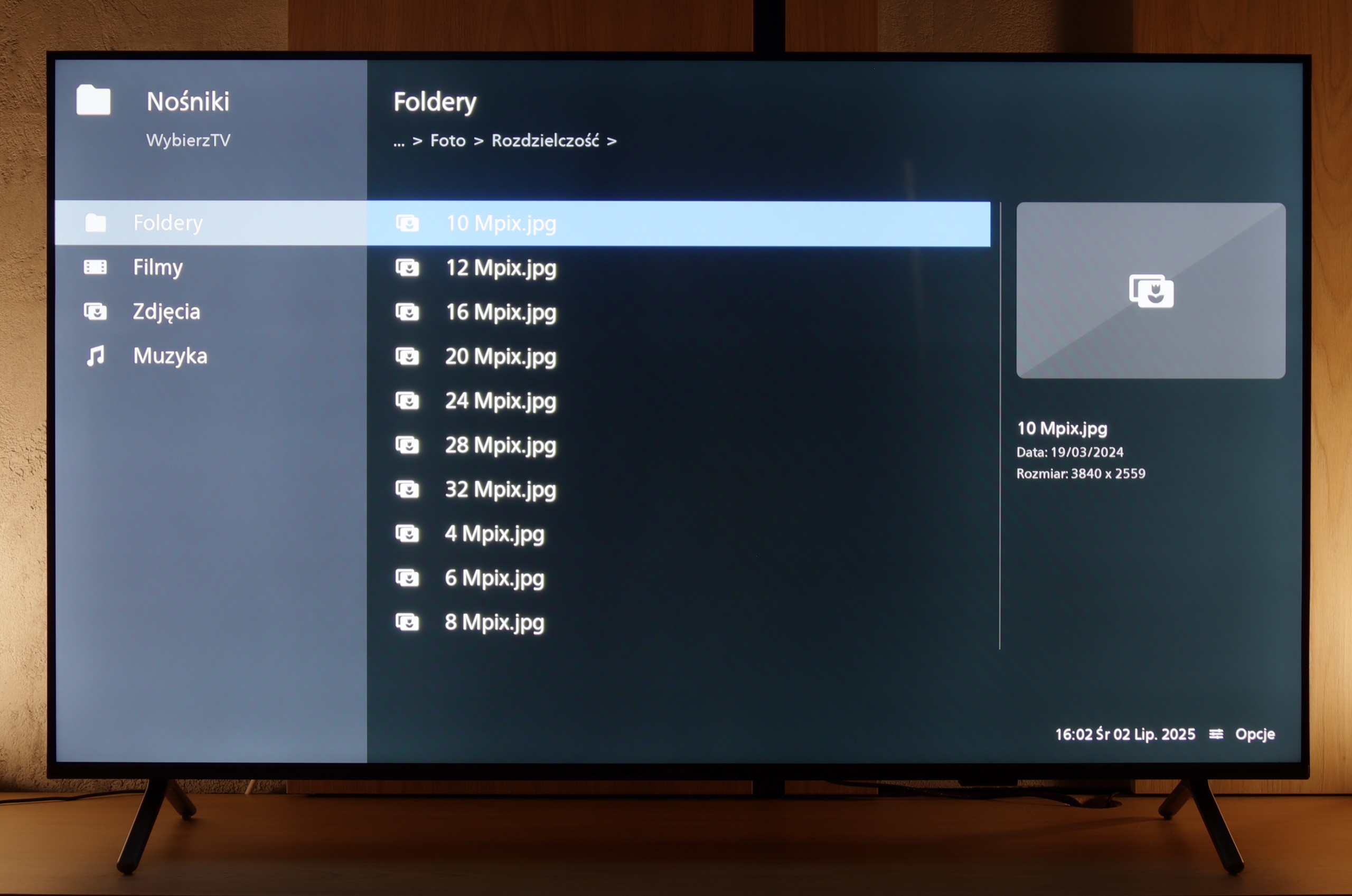
The built-in media player in Hisense U6NQ should satisfy most users. It supports Polish characters and allows for easy editing of displayed subtitles, which is a big plus. Unfortunately, it lacks support for the AV1 codec, which may be an issue for those looking to play newer video formats. However, for less demanding users, the features of the player will be fully adequate.
The PUS8560 handles the playback of most popular video and audio formats from a USB memory stick without any major issues, so there’s no point in detailing the compatibilities one by one. In everyday use, it should simply work – and it does. The only thing worth noting is the handling of images. Although the television easily recognises popular file extensions, there are instances when some images simply do not display when the graphic files have very high resolutions. This may not be a huge problem, but it’s good to keep it in mind, especially if we want to view photographs straight from the camera. Apart from that, the PUS8560 shouldn’t pose any significant issues with playing files from USB.
Apps
7.7/10
4.6/10














































Sound
6.3/10
6.2/10
- Subjective sound quality:6.3/106.2/10
- Dolby Digital Plus 7.1:
- Dolby True HD 7.1:
- Dolby Atmos in Dolby Digital Plus (JOC):
- Dolby Atmos in Dolby True HD:
- DTS:X in DTS-HD MA:
- DTS-HD Master Audio:
Hisense U6NQ is equipped with a standard set of speakers with a power of 20 W, which is a typical solution in this class of televisions. The sound is adequate but does not stand out in any particular way. However, it is worth noting the support for all popular audio codecs, including DTS and Dolby Atmos. This allows us to easily connect a home cinema system or soundbar, achieving significantly better sound experiences than from the built-in speakers.
The television sounds quite pleasant and can confidently be regarded as having sufficient sound levels for most users – both for watching everyday programmes and for an evening viewing of a series. Moreover, a pleasant surprise is that even in this budget-friendly series, Philips has chosen to acquire licenses for full audio formats such as Dolby Atmos and DTS. This is great news for owners of home cinemas and soundbars, as it means full compatibility and no need to "fiddle around" with connecting external devices.


